National Chess Day is a special day dedicated to chess, celebrated on the second Saturday of October. It is focused on a game that has challenged minds and brought players together for years. Chess is more than just a pastime; it is a universal language that has been breaking barriers for centuries.
So, whether you are a seasoned player or just curious about what this day is about, wondering: ‘when Is National Chess Day?’, read on and see why National Chess Day is such an ageless and celebrated tradition.

History of Chess
Chess has a long and fascinating history that began in India during the fifth century. Originally, the game was called Chaturanga, and was designed as a strategy tool that mirrors the four divisions of the military: the infantry, cavalry, elephantry, and chariotry. However, it evolved and spread across the continents into ‘Chess’, the game we recognize today.
Chess then traveled through Persia and into the Islamic world, where the pieces and rules began to change. The Persians called the game ‘Shatranj’, and from there, it moved to Europe, where further modifications were made. The modern pieces, like those at the House of Staunton, namely the King, Queen, Rooks, Knights, Bishops, and Pawns, took shape during this period.
[product skus="MENPLEW-RN-P,MENWLRD375,MENPMED-P"]
Initially, chess was a game for the upper class. Nobility would play it to pass the time and demonstrate their strategic thinking abilities. However, the game’s appeal broadened, thanks to merchants and traders who introduced it to different cultures during their travels. By the medieval period, chess had become popular among all social classes.
The history of chess is not just the game’s evolution but also includes how it has shaped society. It has always been a bridge between cultures and a universal language of strategy and intellect.
When is National Chess Day in 2024?
So, when is National Chess Day? National Chess Day is celebrated every year on the second Saturday in October. In 2024, it falls on 12th October. Here are the National Chess Day dates for the next few years:
- 2025 - October 11
- 2026 - October 10
- 2027 - October 9
- 2028 - October 14
- 2029 - October 13
Importance of National Chess Day
National Chess Day holds significance for multiple reasons, contributing to the broader appreciation and recognition of chess in the United States. A few reasons demonstrating why this day is important are:
Raises Awareness
National Chess Day aims to increase awareness of the benefits of playing chess. These include improved concentration, honing problem-solving skills, and enabling strategic thinking. The game is perfect for children and adults, not to mention the elderly who are fighting issues such as Alzheimer's disease, dementia or depleted cognitive abilities. If you are in school or a chess club, look at these Club Chess Sets from House of Staunton. A new set is great way to celebrate National Chess Day, either for yourself or as a great gift to a fellow player or someone brand new to the game.

Honoring Achievements
This day honors the accomplishments of American chess players, from legendary grandmasters to local chess club champions. It provides an opportunity to celebrate dedication, skills, and contributions to the game, ultimately inspiring new players to pursue their ambitions.
Encourage Participation
National Chess Day encourages people of all ages to participate in chess activities. Additionally, schools, clubs, and community centers often host events, tournaments, and workshops to make them accessible to a wider audience.
[product skus="ROYLECOMBO2,AMERICANCOMBO2,LIBCOMBO2"]
Celebrating History and Culture
National Chess Day celebrates the rich history and cultural importance of chess. It recognizes the journey of this game, from its origin to its modern form, highlighting how it bridges cultural and social divides. Moreover, this day and its celebration remind us of its legacy and power to connect people across generations.
Timeline of National Chess Day
Gerald Ford declared October 9th as National Chess Day through a presidential proclamation, designating it as a day to celebrate this game. Since then, National Chess Day has been observed every second Saturday of October. However, before that, let’s look at this day’s history and its most significant milestones.
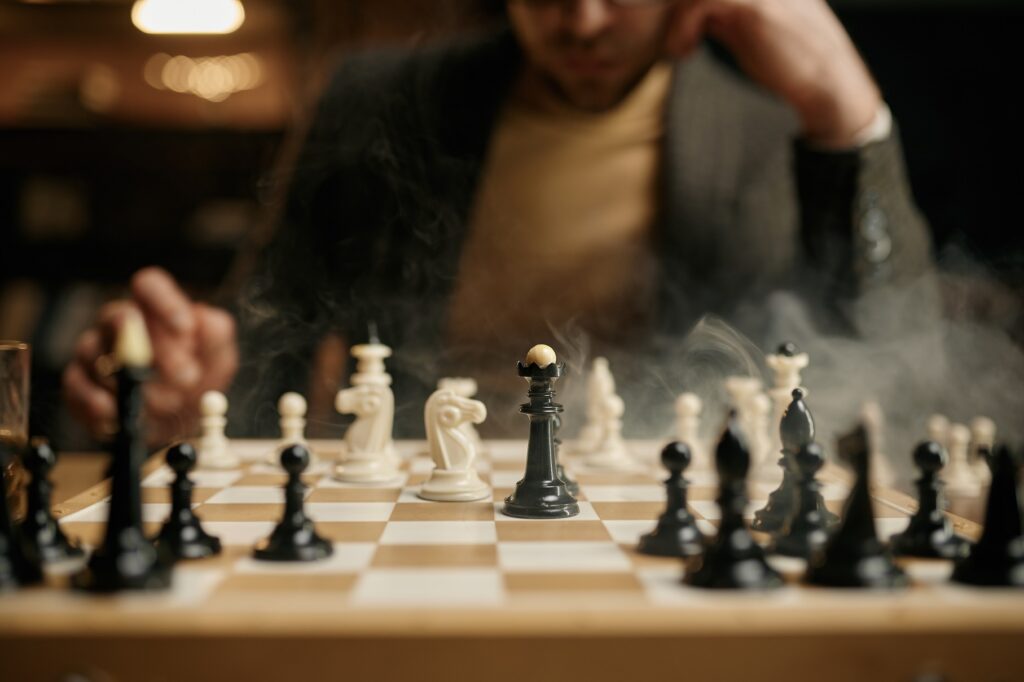
1575: The First Chess Tournament
Italians Leonardo da Cutri and Paolo Boi traveled to Philip the Second’s court in Madrid. They competed against Spanish players Ruy Lopez and Alfonso Ceron, marking the first informal international Chess Tournament.
1939: United States Chess Federation Formed
The American Chess Federation and the National Chess Federation merged to create the United States Chess Federation, establishing a unified body to promote chess nationwide.
1972: Bobby Fischer Wins World Chess Championship
Bobby Fischer, a chess prodigy, became the first and only American-born player to win the World Chess Championship, defeating Boris Spassky of the Soviet Union in a match that had the world enthralled.
1976: First National Chess Day Celebrated
Gerald Ford, the American President, declared that the second Saturday of every October would be observed as National Chess Day. This encouraged Americans to engage with the game and develop critical thinking skills.
[product skus="VARNACOMBO2,FS2375COMBO2,CAPACHESSCOMB-BR"]
1986: World Chess Hall of Fame
The World Chess Hall of Fame opened in the basement of the Chess Federation H.Q. in New York. Over the years, it moved to Washington D.C., Florida, and finally settled in St. Louis, Missouri, becoming a major attraction to chess enthusiasts.
Chess Gameplay
This National Chess Day, let’s go back to the basics. Chess consists of pure strategy, played by two opponents on a checkerboard. Each player starts with sixteen pieces; the objective is straightforward: capture the opponent’s King.
Players and Pieces:
Each player begins with sixteen pieces:
- 8 Pawns
- 2 Rooks
- 2 Knights
- 2 Bishops
- 1 King
- 1 Queen
National Chess Day is also the perfect time to re-learn each piece’s unique way of moving, making the game a more complex strategic battle. If you haven’t played in a while and want to know how the pieces move, here you go:
| Pieces | Moves |
| Pawn | Moves forward one square but captures diagonally. Can move two squares forward in the first move. |
| Rook | Moves horizontally and vertically over any number of squares |
| Knight | Moves in an L-Shape: two squares in one direction and then one square in perpendicular. |
| Bishop | Moves diagonally in any number of squares |
| Queen | Moves horizontally, vertically or diagonally on any number of squares |
| King | Moves one square in any direction |
Pro Tip: Buy themed chess pieces from House of Staunton to give the game a regal look.
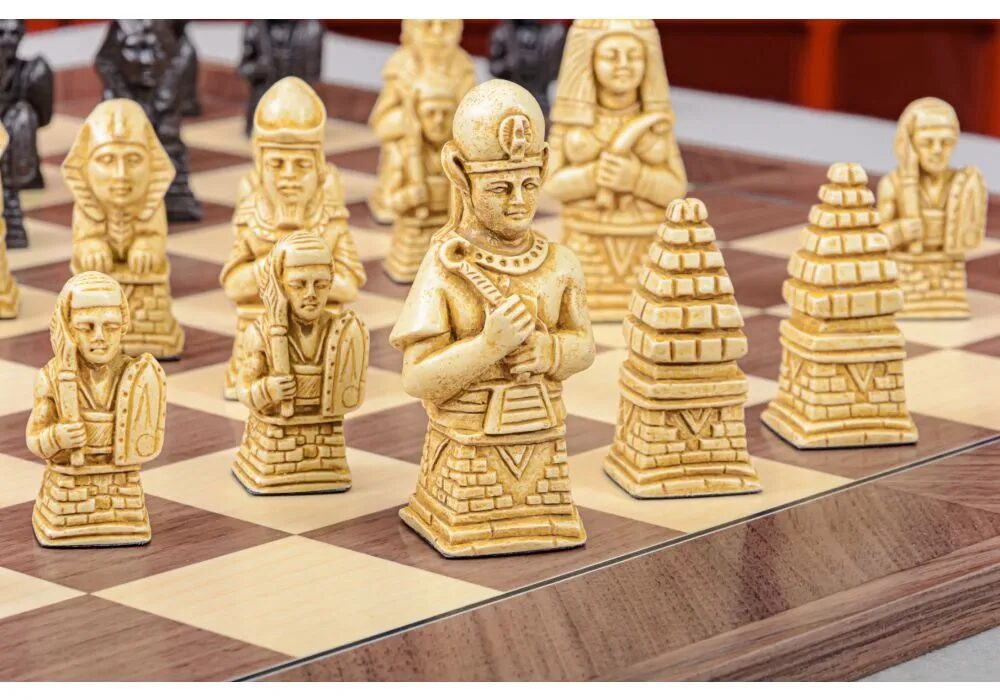
Chess Facts
Chess’ history is full of details that make the game even more intriguing. Some facts about chess to celebrate National Chess Day:
Fool’s Mate
A chess game can end in as few as two moves. This quick checkmate is known as Fool’s Mate and can only occur if White commits an extraordinary blunder where they expose a diagonal path to the King, leaving it undefended and limited by its own pieces.
Longest Official Chess Game
The longest chess game ever recorded took place in 1989, between Ivan Nikolic and Goran Arsovic in Belgrade. The game lasted two hundred and sixty-nine moves, lasted twenty hours, and ended in a draw.
[product skus="MENPALC-BN-P,MENPSTN-BN-P,MENPROM-RN-P"]
Checkmate Origin
The term ‘checkmate’ originated in Persia and comes from the phrase Sah Mat, which is a warning to the other player that the game will end. The direct translation is ‘the King is Dead’.
The Oldest Known Chess Piece
The oldest known chess pieces were discovered at Afrasiab near Samarkand in Uzbekistan, despite some debate about their origin. The set included seven pieces: a king, chariot, vizier, horse, elephant, and two soldiers. It should be noted that all of these were made of ivory and dated back to 760 A.D.

The First Chess Computer Program
In 1957, an IBM engineer named Alex Bernstein developed the world’s first, fully automated chess engine. This engine, designed for the IBM 704 Mainframe, took eight minutes per move and could play an entire game.
The First Female Grandmaster
Nona Gaprindashvili was the first woman to be awarded the title of Grandmaster in 1978. She earned this title from FIDE, and the achievement came after her outstanding performance at the 1977 Lone Pine International Tournament, where she made history.
Chess was Played in Space
On June 9th, 1970, cosmonauts Adrian Nikolayev and Vitaly Sevastyanov paused their space-flight duties aboard the spacecraft Soyuz 9 to play the first match between Earth and Space.
[product skus="BRDWSIG25-WBMB-P,BRDWCCII-WBRBEM,BRDWSUP-ELMBM"]
Staunton did Not Create the Staunton Set
Contrary to what people think, Howard Staunton did not design the iconic Staunton set, despite its name. According to the accepted origin story, it was Nathan Cook, an architect, who took inspiration from the city around him to make the timeless chess board we all see.
Celebrity Chess Players
Humphrey Bogart, Stanley Kubrick, and Peter Theil are among the best celebrity chess players and enthusiasts. Kubrick has a rating of 2000, and Thiel achieved the National Master title.
Longest Possible Chess Game
Theoretically and controlled by the 50-Move Rule, the longest game of chess can reach up to 5898.5 moves. The calculation accounts for the resets of the 50-Move Rule, which are initiated by a pawn move or capture.
Final thoughts
National Chess Day is a celebration of a game that has fascinated players for centuries. The rich history, strategic gameplay of the Grandmasters, and bringing people together to practice and improve their skills - all contribute to the game’s popularity. You can celebrate the day in many ways - learn more about the game, gift yourself (or a friend) a unique chess set, or play online. Visit House of Staunton for high-quality chess sets, accessories, and more to honor the legacy of this timeless game.
National Chess Day is just around the corner this coming October. So what are the origins of National Chess Day, and what is this day all about?
Chess is more than a game; it’s a battle of wits, patience, and strategic brilliance. Over the years filmmakers have captured chess's essence in many chess movies. They have repeatedly brought its drama and excitement on the big screen. As Beth Harmon from The Queen’s Gambit said, ‘It’s an entire world of just sixty-four squares.’
From Uganda’s slums to championship halls, chess in film reveals narratives of resilience and intellect. This article explores nine movies and shows that capture the soul of chess, inspiring both enthusiasts and newcomers.

Credit: stokkete / envatoelements
Queen of Katwe - 2016
Queen of Katwe tells Phiona Mutesi's true story, rising from Uganda's slums to international chess fame. Guided by her coach, Robert Katende, Phiona overcomes the challenges of poverty to become a champion. Phiona’s journey showcases her perseverance and determination and proves that passion and hard work lead to success.
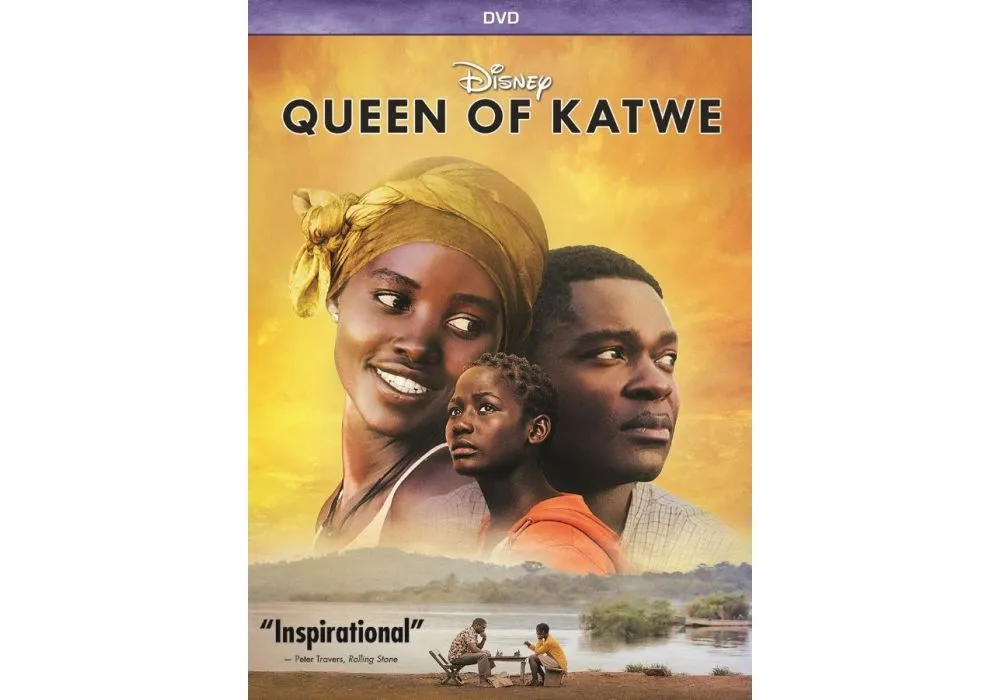
The movie features Philidor’s smother mate, a famous checkmating pattern in chess. This intricate sequence begins with standard opening moves, such as [1. e4 e5 2. Nf3 d6 3. d4 exd4 4. Nxd4 Nf6], establishing control over the center. The midgame sees tactical brilliance, with moves like 11. Nxf7! sacrificing the knight to draw the black rook into a vulnerable position.
This sequence culminates with a decisive queen and rook sacrifice, trapping the black knight [16. Rxd#8], leading to checkmate. Chess players learn how Philidor’s smother mate improves tactical pattern recognition, sacrifice importance, and strategic piece placement.
Through Phiona’s journey, players see that determination and strategy overcome obstacles and achieve success regardless of origins. To keep practicing even when you are on the move on vacation, make the most of a travel chess set from House of Staunton.

House of Staunton.
Searching for Bobby Fischer - 1993
This film follows the life of young chess prodigy Josh Waitzkin. Who balances his natural talent with the pressures of competition. The movie illustrates several key chess movies and strategies that players can learn from. It begins with the Queen’s Pawn Opening, leading to the Indian Game. Then transitioning to the King’s Indian Defense [2. c4 g6], known for aggressive counterplay. We also see the Four Pawns Attack [5. F4], an aggressive pawn structure aimed at dominating the center.

Therefore, these moves highlight the importance of controlling the center of the board and developing pieces efficiently while preparing for offensive and defensive maneuvers. It teaches players the value of flexibility in openings and the significance of a pawn structure in shaping the game, rising from well-timed pawn advances.
For players, maintaining a love for the game means achieving long-term success, and learning from this movie is important as it talks about some of the most historic games of chess.
The Queen’s Gambit - 2020
This series followed Beth Harmon, an orphaned chess prodigy who rises to the top while battling personal demons. The show highlights The Queen’s Gambit [1. d4 d5 2. c4]. Which takes control of the center and creates a strong pawn structure. Beth’s journey in the show illustrates the power of both inner strength and overcoming obstacles. Such as chess blindness, through strategic thinking.
It inspired viewers by showing how dedication to mastering chess can lead to both personal and professional triumphs. The Queen’s Gambit is ideal for games where you want to gain control of the board and lays a solid base for attacking and defensive tactics. This opening is also helpful in games where you want to dominate the board early and value flexibility.
Pawn Sacrifice - 2014
This movie tells the story of Bobby Fischer’s intense rivalry with Soviet champion Boris Spassky, during the 1972 World Chess Championship. The film accurately portrays several key games and positions from the 1972 Championship match between the two, the most notable one being Game 6. It is considered one of the greatest chess games ever played and begins with Fishcer playing the English Opening [1. C4], a surprise move since it was a new opening for him in competitive play.
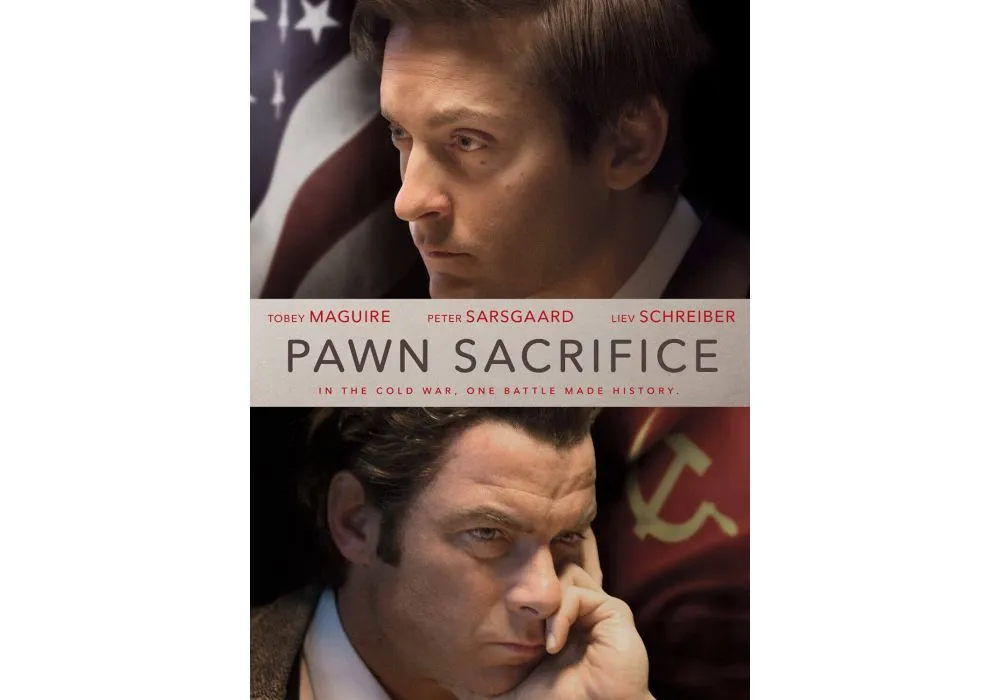
The game continues with a series of tactical and strategic moves, including Fischer’s brilliant exchange sacrifices and deep positional play. Key moves like 1. C4, 5. e3 11. Bd3 and 29. b4 shows Fischer’s approach and ability to maintain control under pressure. The movie exemplifies the importance of preparation, strategic depth, and tactical excellence in chess. Pairing this with an analysis chess set only improves the strategy you apply.
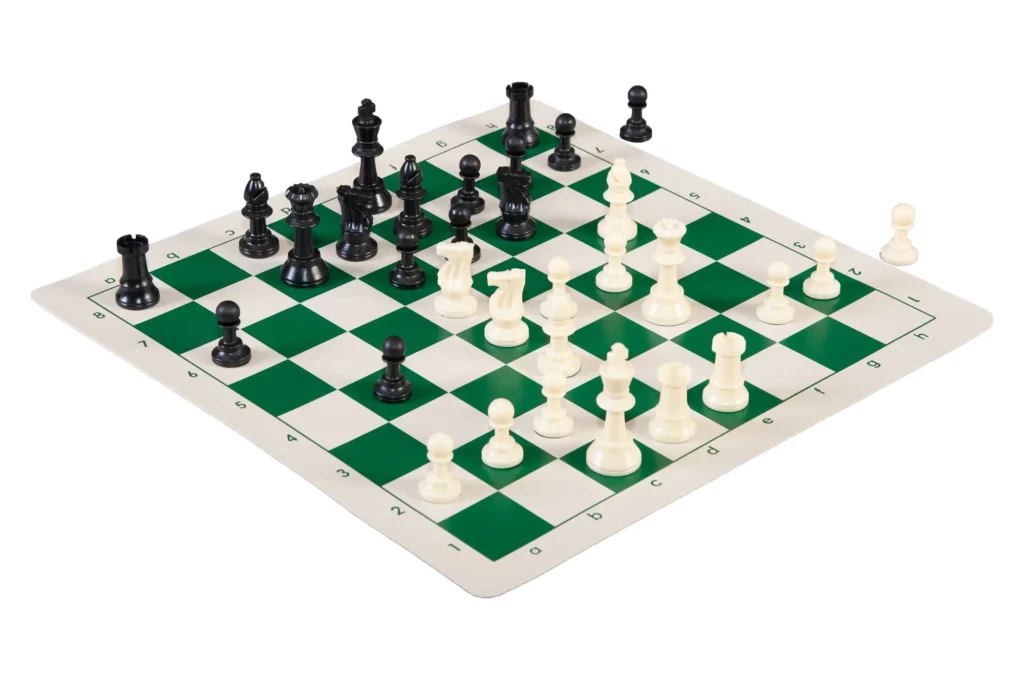
The movie reveals the reality of these competitions and how pressure and mental stress can simultaneously lead to triumph and turmoil. For avid chess players, it shows the importance of preparation and adaptability in a game. These moves are ideal for games where players want to be flexible while using a counter-attacking strategy that can adapt to various situations on the board, allowing players to create unpredictable positions that catch their opponents off guard.
Bobby Fischer Against the World - 2011
This documentary looks into Bobby Fischer’s intriguing life, chronicling his ascent to prominence and eventual fall from grace. Two notable moves in the game include the Bishop sacrifice, [29…Bxh2], and the English Opening. The first was significant because it led to Fischer’s unexpected loss, while the second was a strategic surprise to catch Spassky off-guard, leading to a world-famous game in chess history.
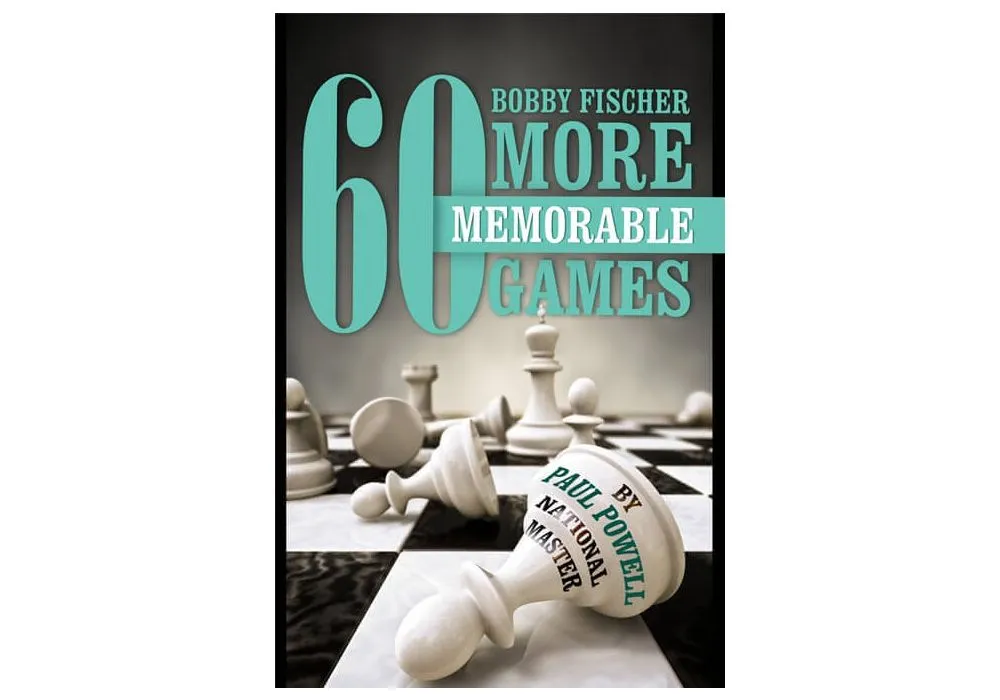
The movie explores Ficher’s intellect, contributions to chess theory, and personal problems. It is an in-depth look at the fine line between genius and madness, and Fischer’s long-lasting influence on the chess world. For those who know the game well and are experienced in it, Bobby Fischer Against the World - 2011 emphasizes mastering both the psychological and strategic sides of chess. The movie’s popularity stems from its numerous tactical shows and complex middlegame positions, making it excellent for players who prefer fluid and aggressive play. Understanding Fischer’s approach can inspire players to learn more about preparation and adaptation, demonstrating how strategic risks and psychological fortitude lead to incredible chess success, especially with the right chessboard.
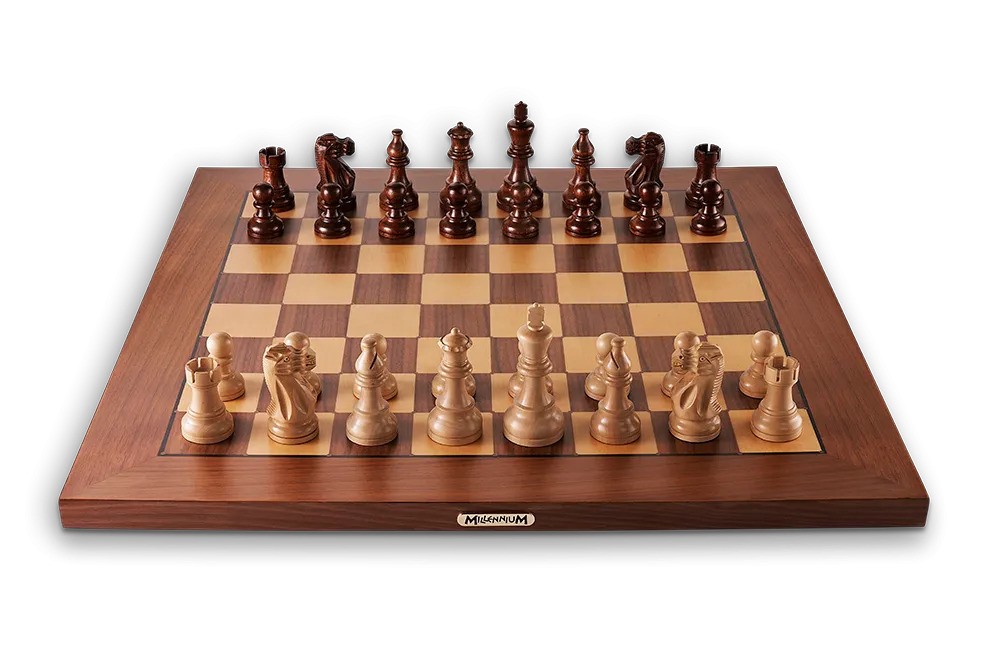
The Luzhin Defence - 2000
Based on Vladimir Nabakov’s novel, this film follows Alexander Luzhin, a disturbed chess grandmaster, preparing for a major tournament. The movie features a 1. Kg2 move by Turati, leading to a forced checkmate and exemplifying the importance of anticipating the opponent’s responses and planning multiple moves. The move 4. gxh3 and its follow-up resulted in a checkmate with 4 … h6+ and 5.Kh4 Bf2# demonstrates the necessity of recognizing tactical opportunities and executing precise combinations.
Luzhin’s narrative also studies the relationship between personal life and business obstacles, showing how personal connections can stabilize competitive turbulence.
The movie emphasizes how mental health and self-care are equally significant during a high-pressure tournament. The choice of moves used in the movie illustrates the attractiveness of traditional strategic play above flashy tactics and works for those who value a gradual approach to the game.
Understanding Luzhin’s journey can inspire others to cultivate their strategic and emotional health for a balanced and practical approach to the game.
To make the experience even better, players can explore House of Staunton’s Custom Printed Chessboards.
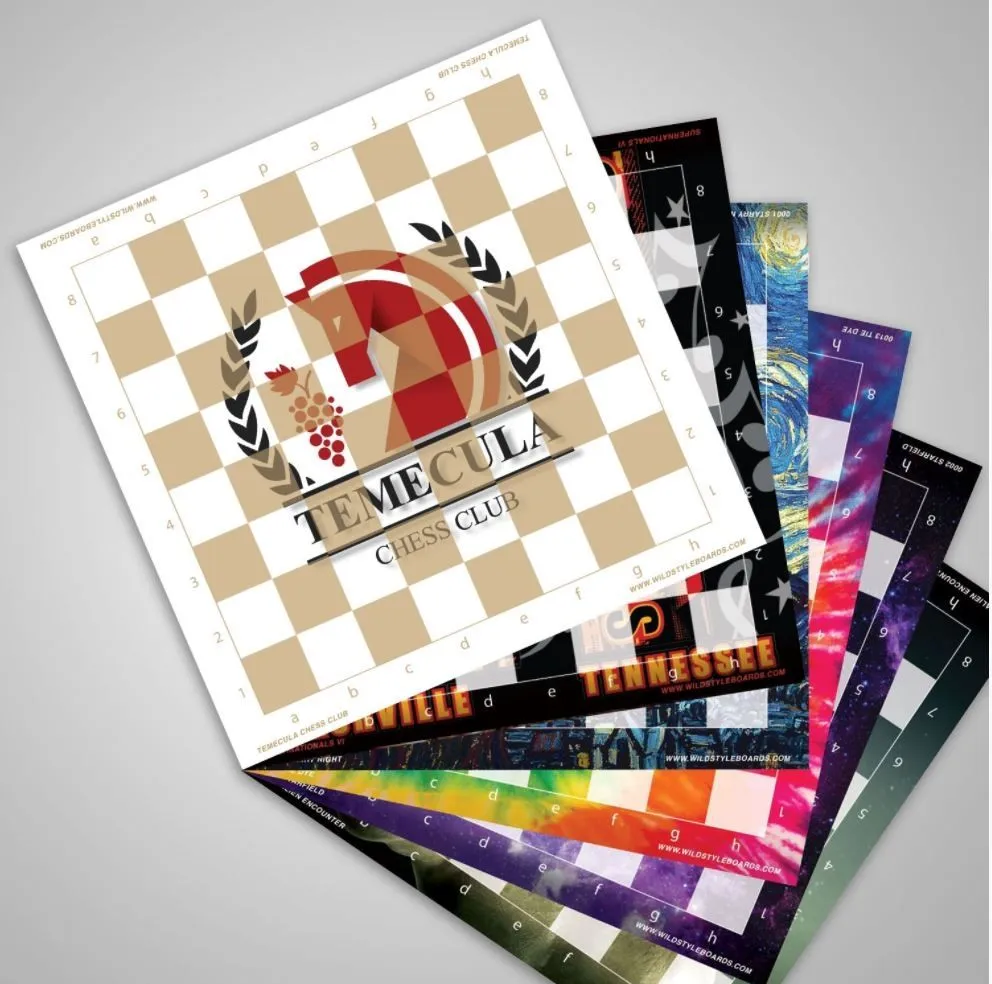
Game Over. Kasparov and the Machine - 2003
This documentary follows Garry Karparov’s 1997 battle with IBM’s Deep Blue, a historic event in the junction of human intellect and artificial intelligence. The movie goes into Kasparov’s careful planning and psychological techniques, displaying the unique problems that AI offers to chess. Kasparov, renowned for his strategic brilliance, was under unprecedented pressure as he battled not only a machine but the embodiment of technological innovation.
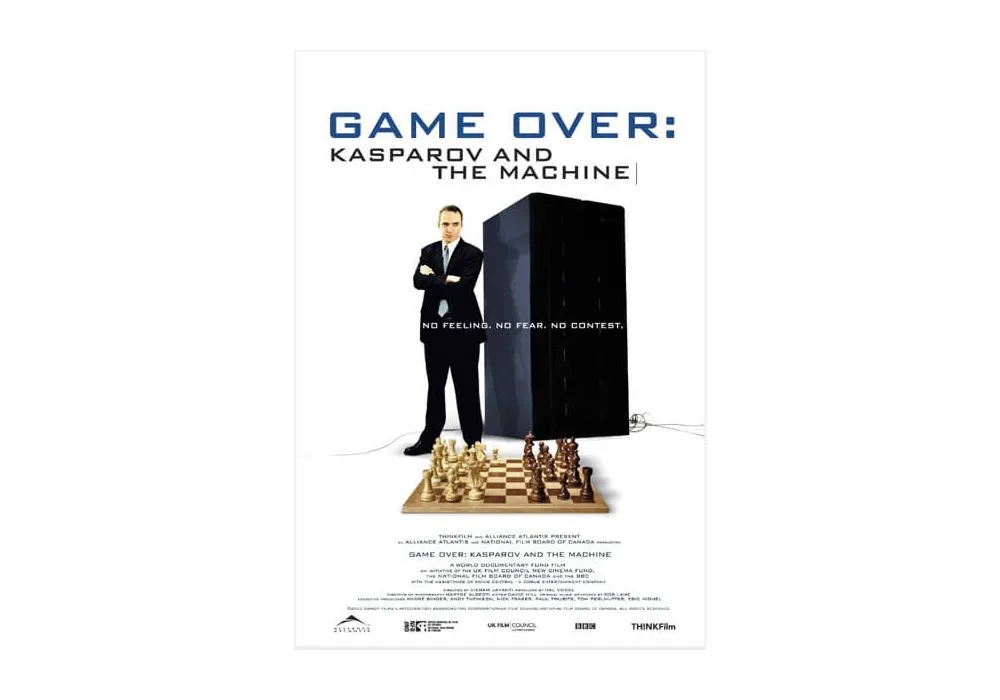
The movie offers an intriguing glimpse into the preparation and attitude required to confront such an opponent, showing Kasparov’s usage of openings like the Reti Opening in Game One, which showed Kasaparov’s tactical prowess, therefore winning that game. The most important move of the game was in Game Two, which was Deep Blue’s Caro-Kann Defence, and caught Kasaparo off guard and led to a computer victory, marking a historic moment in chess. In the decisive Game Six, Deep Blue again used the Caro-Kann Defense [1. e4 c6] to play solidly and demonstrate the advanced capability of AI in chess.
[product skus="WIN0368CB,sB0025ER,B0041IS"]
This movie emphasizes the significance of adapting to new technology and methods for chess players. Furthermore, it highlights how chess is constantly evolving to technological breakthroughs despite its deep roots in tradition. Deep Blue’s AI challenges players to reassess conventional strategy and adopt newer approaches to the game. Understanding this can encourage players to investigate classic and modern aspects of the game and change their strategies to include new developments. Most importantly, it stresses the mental strength to compete against an emotionless, highly precise machine.
Brooklyn’s Castle - 2012
Brooklyn’s Castle shows students’ lives at Intermediate School 318, an inner-city school in Brooklyn, New York. The school has won more national chess titles than any other junior high school in the United States. The documentary focuses on the student’s trials and accomplishments on and off the chessboard, understanding the impact of chess on their lives.

It highlights the value of community support, mentorship, and education in developing young talent. It also depicts how chess is a catalyst for developing self-esteem and critical thinking abilities. The movie highlights how portable chess sets are invaluable for players who travel, especially when you want to practice during school hours.
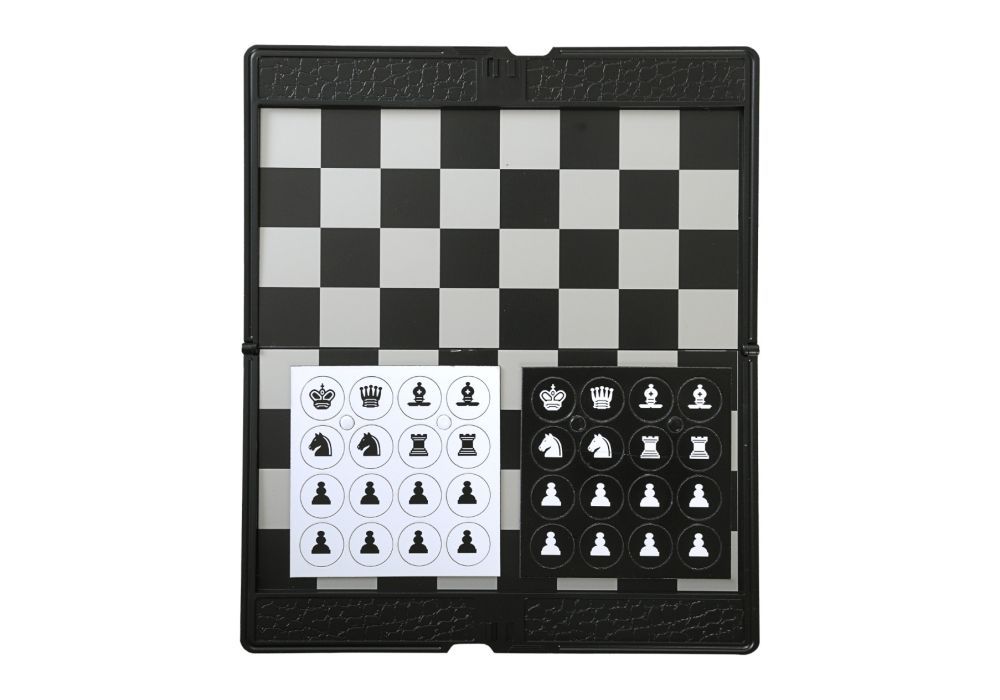
Magnus - 2016
The 2016 movie Magnus follows the life of chess prodigy Magnus Carlsen, from his early years to his victory at the World Chess Championship. It covers significant events like the match against Garry Kasparov and his World Championship triumph over Viswanathan Anand. Although, the movie does not focus on particular chess moves, it teaches viewers a lot about the game by highlighting Carlsen’s creative thinking, resilience under pressure, and strategic planning.
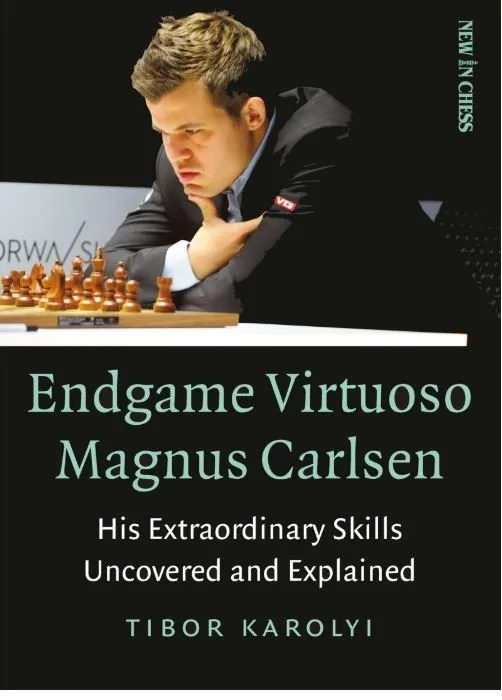
Carlsen is also an example of dedication, attention, and values mental strength in a chess competition. The documentary shows how extraordinary achievements in chess result from passion and determination. Players can draw inspiration from Carlsen’s distinctive style, defined by his risk-taking and positional knowledge, to formulate strategies on a Magnus signature chess set.
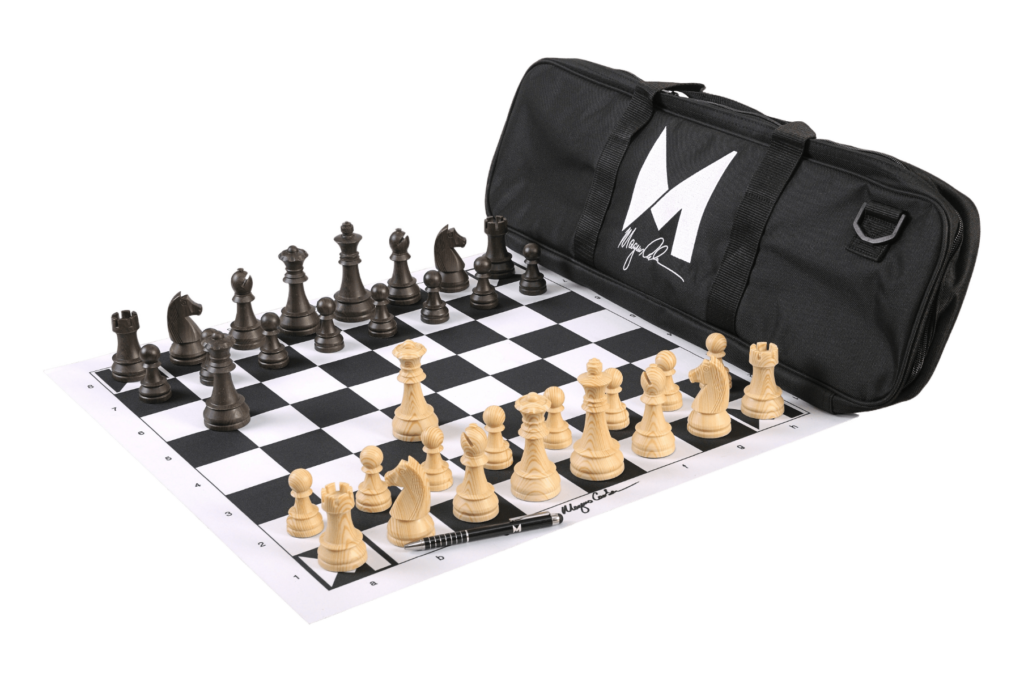
Conclusion
Chess is a source of inspiration, a tool for growth and a bridge between cultures and generations. These shows and movies about chess capture its essence, telling stories of triumph, struggle, and unyielding human spirit. By studying the moves and strategies in these films, players can gain insights and apply them to their games. So, beginners or pros find perseverance, determination, and passion constant in these shows and chess movies. For more chess inspiration, visit the House of Staunton.
Often, a chess movie, series, or book can inspire you to take up the game or even become a more serious player. Here are nine chess-themed works that will inspire you and drive your passion for the game.
Chances are, if you’re reading blog post content from the House of Staunton, you enjoy spending some of your time with the great game of Kings and Queens. If this is the case, who could blame you? Our game boasts symmetry, aesthetic beauty, and an endless challenge in geometry and logic. Hundreds of millions of people around the world find chess captivating. Indeed many of us will be hypnotized for life. Yet who created chess?
Now, there’s no doubt that there have been some clear moments in the historical timeline to boost the popularity of chess. Some modern examples include Bobby Fischer winning the World Championship in 1972, Garry Kasparov’s fall to the IBM supercomputer Deep Blue (frequently cited as the defining point in computers surpassing human chess playing capability), and the COVID-19 pandemic (along with the popular ‘Queen’s Gambit’ Netflix series), just to name a few.
However, our game is among the oldest around, with a history long enough to make the above highlights all seem as though they were just yesterday. We all devote time to our beloved game, but who created the game of chess? Let’s take a look at the creation of chess and its evolution into the game so well-known around the world today.
Table of contents
History and Origins
Chess is ancient which is why many facts and details surrounding its early history are contested, with some even remaining disputed to this day. Who wouldn’t argue -if they could- that they or their ancestors were responsible for something like chess?
Like many other ancient history, different accounts from people of many differing perspectives paint a conflicted, and sometimes incomplete, picture. We’d also do well to remember that many of the records and accounts may simply have been lost to time. We can only rely on those accounts which have endured through the centuries.
Indian Origins
The general consensus is that the earliest antecedents of the royal game first appeared (or were at least mentioned in written text) in what today is India, around the beginning of the seventh century. Of course, even today we can understand chess to resemble a battlefield and the struggle which happens upon it. There are two armies in direct, violent opposition, with different classes of warriors. The ultimate goal is the opposing ruler, with a simultaneous focus on protection of one’s own.
The name given to the ancestor of today’s royal game was Chaturanga. Which comes from Sanskrit where “chatur” meant four, and “anga” meant a limb or part. These “four divisions” represented four parts of an army - infantry, cavalry, elephants and chariots. These four, along with the ruler and his minister (or ‘sage/scientist’ in the old Arabic). Eventually came to represent the six types of pieces we know and use today.
Original Chess Pieces
The infantry were the footsoldiers. As the front line in the battle, they would never retreat, and therefore became the pawns. The cavalry comprised soldiers fighting on horseback. Since horses, in a real battle, could leap over obstacles and also turn quickly, they of course became the knights. The elephant became the bishop, although the original piece could only move only two squares diagonally.
The chariots could move quickly, but required clear paths to do so; these later became the rooks. The ruler and his minister eventually became the king and the queen. While the idea of a ruler, or king, or monarch has largely persisted through time. The idea of “the queen,” was not original. Prior to the game’s arrival to Europe. The queen was known as an adviser to the king, a wise man, or something to that effect. Let’s investigate how the queen, and other pieces, have evolved in their powers throughout history.
[product skus="MENPLEW-BN-P,LEWCOMBO2,MENW1962BAK44"]
Evolution of the Pieces and Their Powers
Rook and Minor Pieces
As the propagation of chess took it from India to the west, the pieces not only took on new monikers. But also gained new powers of movement. The rooks and knights have retained their original movements from the days of chaturanga. Which explains why one of the earliest recorded checkmating patterns is the Arabian mate (diagram).

The bishop, on the other hand, was originally quite weak in relation to his modern counterpart. Its movement was still diagonal, but only one square at a time. But how did it go from “elephant” to “bishop?”. When chess made its way to Europe, the elephant was rather exotic to those enjoying the game.
More familiar was the idea of a royal court (complete with ruling monarchs)! Which at the time was closely linked to the church. The result was the bishop; the modern day piece design often includes a small slit, which bears some resemblance to a Catholic bishop’s mitre (religious headgear).
The King and Castling
Perhaps the most important innovation regarding the king began its development around the 13th century. Castling, now a known and defined king move in standard chess, itself went through updates and variations, with differences depending upon the time and place in question.
Today, a castling king only moves two squares along the rank (horizontally towards a rook). However, in instances such as medieval England, Spain and France. The white king (from e1) could jump to c1,c2,d3,e3,f3 or g1 (Diagram)! The black e8-king, in turn, would be afforded corresponding squares.
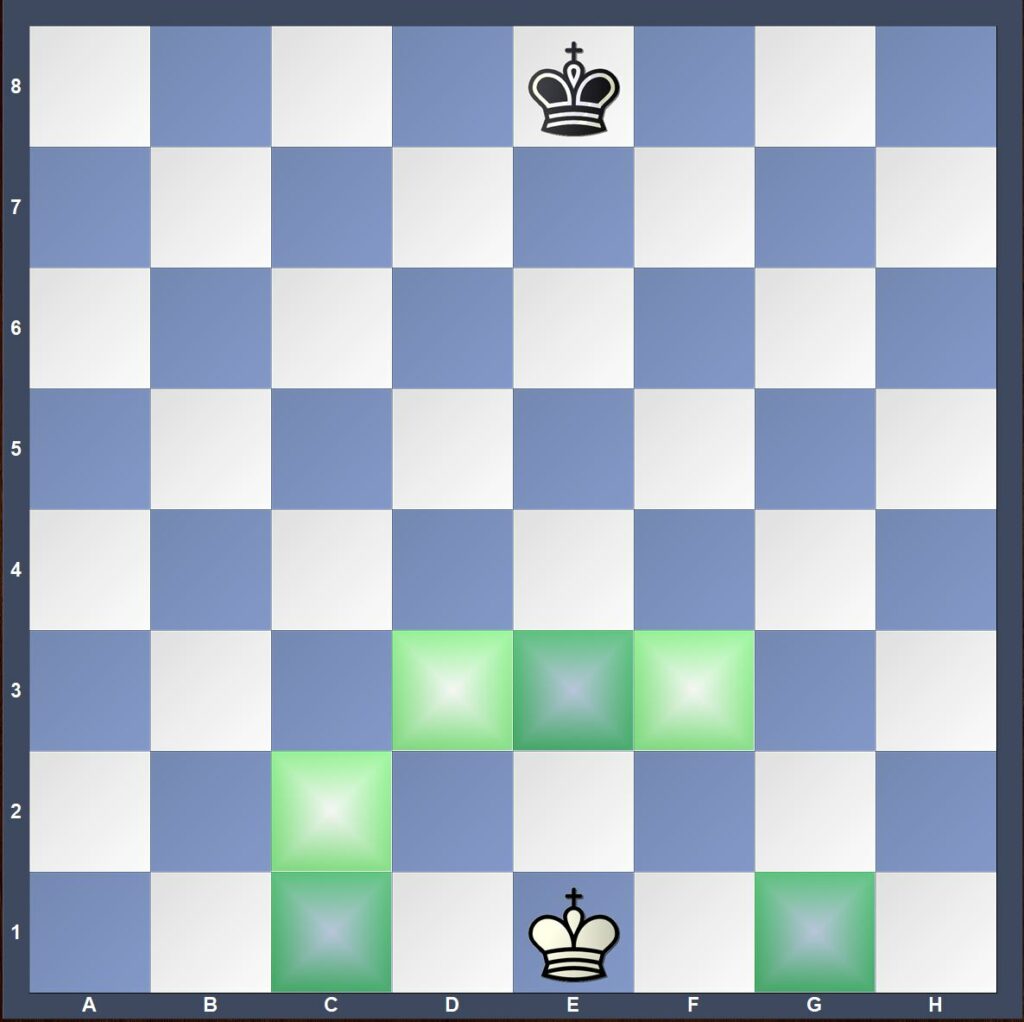
Italian author Jacopo da Cessole (c. 1250 - c. 1322) also included the c3,g3 and g2 squares in his book (below) for a more symmetrical picture. To compensate for the king’s initial distance from the a-file and proximity to the h-file, b1 and b2 were sometimes included.
Spanish chess player Luis Ramirez de Lucena (c. 1465 – c. 1530) mentioned a form of castling which ended in a similar position to today’s version. But comprised of two moves; first the rook moving adjacent to the king, and only on the next move the ‘king’s leap’ over the rook. It wasn't until 1620 in France(and 20 years later in England) that modern day castling was established. This primarily represented the combination of the rook's move and the 'king's leap' into one singular movement.
(Above) A page from Luis Ramirez de Lucena’s book, Repetición de Amores y Arte de Ajedrez con CL Juegos de Partido

"Repetition of Love and the Art of Playing Chess, with 150 Games" is the oldest extant chess book, published c. 1497.
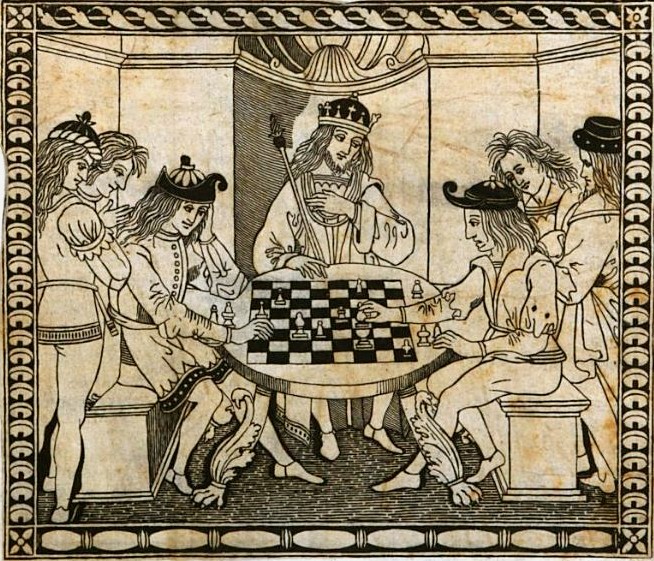
(Above) An illustration from Jacopo da Cessole’s Liber de moribus hominum et officiis nobilium super ludo scacchorum
('Book of the customs of men and the duties of nobles or the Book of Chess')
[product skus="DVD0160CL,B0021SHV,WIN0353CB"]
The Mad Queen
In the old days of the original Chaturanga game, the queen (still, then, referred to as ‘king’s adviser’, ‘wise man’, etc…) was a very weak piece, capable of a diagonal movement reaching only one square away. However around 1475, the major changes in piece powers brought chess much closer to today’s game.
At that point chess was spreading and becoming popular with intellectuals and the wealthy in larger towns. Additionally, by then the ‘lady’ or ‘queen’ identity had already been properly established. Recall that Europeans made sense of the pieces through the royal courts they were familiar with. Therefore it was quite natural for the king to have a regal companion to sit beside him upon the throne.
No transformation was as dramatic as that of the queen. Today we know her as the most powerful piece on the board, combining powers of both the rook and (modern!) bishop. The new, modern queen, could unleash long-range devastation in eight (both the cardinal and the intercardinal or ordinal) directions.
This ‘modern’ change in the queen's movement occurred at the same time as the changes in the bishop (mentioned above). So the game took on a new character and often took on some new names. For example, the Italians called the new queen furioso. With the modern game being dubbed scacchi alla rabioso - roughly ‘furious/mad queen' and ‘rabid chess,’ respectively. There was one final recipient of a ‘modern upgrade’ towards a more modern game, which we should not forget despite its lowly status.
From Zero to Hero - Enter The New Pawn
The humble pawn had always been the weakest and least valuable piece. With many copies of the same unit per army (eight in today’s chess). The small ‘foot soldier’ must also have been grateful to learn of its modestly upgraded status. The two main upgrades to the pawn to today’s powers were the two square initial advance and promotion, the latter of which was of heavy weight, given the new ‘mad queen.’
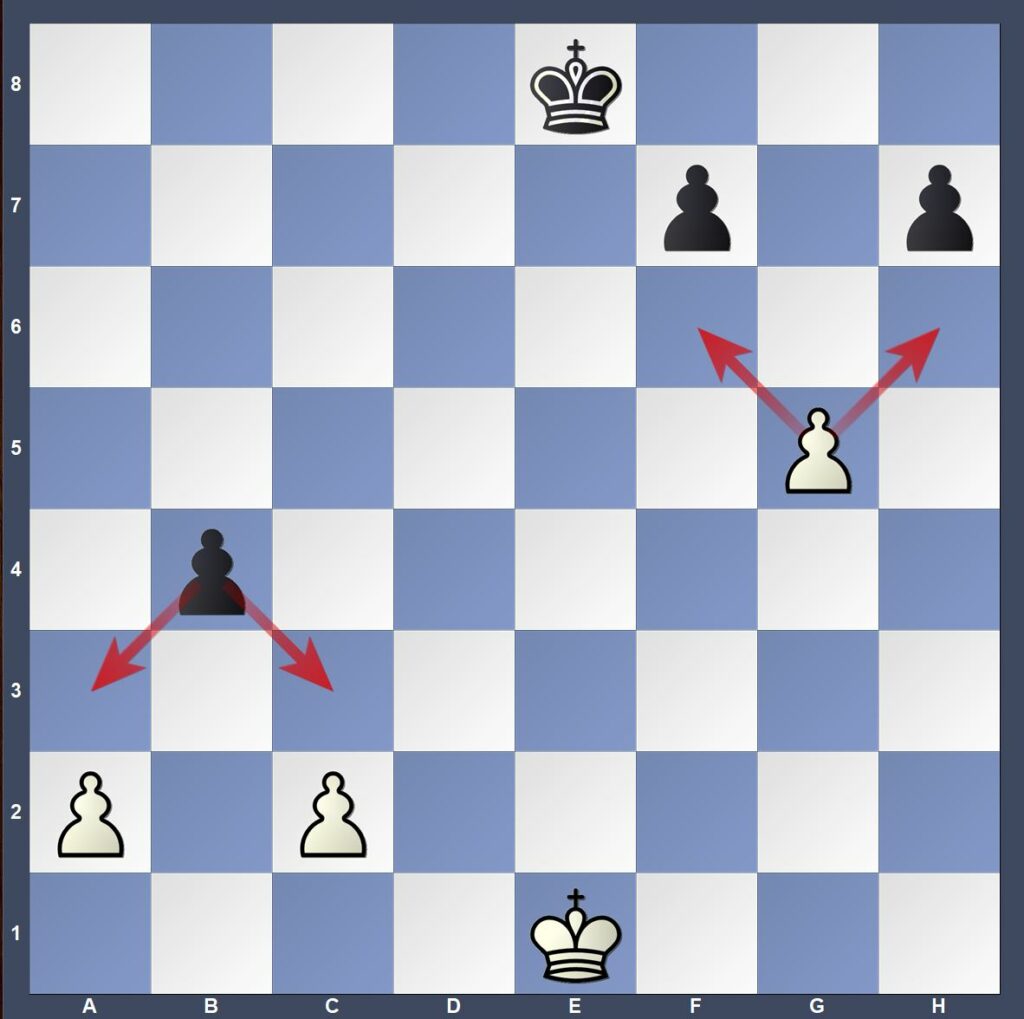
The en passant capture would only become standardized in the late 19th century (along with stalemate and white’s right to move first).
The en passant (French for ‘in passing’) capture meant, on the left, that the b4 and g5 pawns could capture to the red arrows even if the two-square initial move was employed by the opponent.
[product skus="B0166NIC,B0024SHV,WIN0069CB"]
The Modern Era
The 19th century saw great growth in the game, particularly in Europe. With the standardization of most rules (including the new piece movements discussed above). It became more possible to share the game across distances, a challenge previously not only due to travel times but to variations in the rules used in different areas.
Chess clubs began to form, and the intellectualization of the game began to flourish. Chess in print quickly became an object of interest, with books, journals and newspapers all entering the public sphere. This meant chess theory and study started climbing to new levels. It also meant the average person would be more likely to see chess, although it still remained largely inaccessible to the poorer working classes.
In 1851, the city of London planned and executed the Great Exhibition of the Works of Industry of All Nations, or Great Exhibition, for short. It was designed as the first “World Fair,” of sorts, calling for a showcase of culture, art, and technology both from Great Britain to the world, and vice versa. Famous personalities of the time attended; this included writers, scientists, inventors, royalty and more. The exhibition was held at a large, temporary structure glass and steel structure, the “Crystal Palace” within London’s Hyde Park.
The First International Chess Tournament
The Great Exhibition was also the venue for the first international chess tournament, proposed and organized by Howard Staunton. He was an English chess player thought by many to be among the best in the world at the time. The tournament consisted of sixteen of the world’s strongest players (although quite likely difficult to determine in those times), despite many unable to accept their invitation for a variety of reasons.
Aside from the tournament itself (which unfortunately, in retrospect, had a clumsy format). Staunton and his colleagues had other aims for chess within the Great Exhibition. Chief among these goals was a “Chess Parliament” of sorts. With the idea to establish rules for notation, eliminate ambiguities in rules between countries, and importantly, establish time limits for games.
This was logical, since the participants, leading scholars and players in their own right, were already gathered for the tournament. They hailed from various countries and backgrounds, and since travel was more difficult back then, it made sense to take advantage of everyone being convened together.
The eventual winner of the tournament was German player Adolf Anderssen. He defeated Staunton himself by four wins to one in their head-to-head match-up. He was widely regarded as the best player in the world. This victory was a routine victory among other notable results, both before and after the tournament.
Undoubtedly the most famous game from the 1851 Crystal Palace was a victory of Anderssen’s over Lionel Kieseritzky. They were paired together in the first round of the tournament. But what would later become known as the Immortal Game was actually an offhand game. Although it was meaningless for the standings but forever preserved in history!
[product skus="MENWWTP475,MENWCPB40,MENWFSP60"]
The Staunton Legacy
Staunton’s own legacy, on the other hand, had arguably little to do with his own games. One of his main ideas for the Exhibition and tournament (and generally for the future of chess) was the standardization of the designs of the actual chess pieces. Ornate designs were common and displayed great craftsmanship, but were often difficult to identify, particularly when the players came from different places, which since the Crystal Palace only increased in occurrence.
When you see a standard set of chess pieces. Whether it be at the park, in a television series, or at a tournament or club. The chances are they’re a direct reflection of the standard Staunton himself was able to advocate for and establish.
At House of Staunton, you’ll find pieces of all types that match this style. Whether you’re looking for plastic pieces, wooden pieces, tournament size, or for travel. As a matter of exquisite craftsmanship and beauty, we also boast pieces from The Genuine Staunton® Collection - The Original 1849 Series Vintage Luxury Chess Pieces.
Bibliography
Gizycki, J. (1960). A Little History. In A History of Chess. essay, Sport i Turystyka.
Seirawan, Y., & Silman, J. (2003). The Evolution of Chess. In Play Winning Chess. essay, Everyman Chess.
The History of Chess. (n.d.). In Merit Badge Series - Chess. essay.
London 1851 Chess Tournament. https://en.wikipedia.org/wiki/London_1851_chess_tournament. (n.d.).
Wikimedia Foundation. (2024, February 13). Chess. Wikipedia. https://en.wikipedia.org/wiki/Chess#History
Chess has been around a long time, but who created it? Let’s explore the history of chess, its evolution, and who contributed to its early development
Every piece on the chessboard represents a symbol of power, strategy, or elegance. The knight is one such piece that combines a unique design with strategic movement capabilities, making it an integral part of a chess game. Typically represented by a horse’s head and neck, the knight holds an L-shaped movement on the chessboard.
Much of a handcrafted chess set’s value is associated with this one piece, taking a whopping two hours to complete to get it ready for championships. And rightfully so, from the exquisite details of the horse’s anatomy to the poise of the rider, the tiniest details matter when designing a knight. Let’s read through and discover why a knight chess piece is the pinnacle of quality, hard work, and artistry.
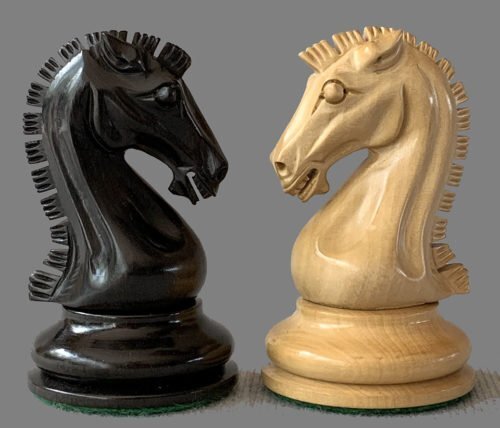
Table of contents
Historical Significance of the Knight
Chess, then called Chaturanga, is believed to have originated in India centuries ago, and the pieces were a representation of the military structure of the time. The knight was the embodiment of a cavalry unit when horsemen were an integral part of ancient warfare.
One theory suggests that the knight's movement mirrors the cavalry's tactics. Instead of charging directly, cavalry often veered to outflank their opponents. This lateral movement provides a somewhat reasonable explanation for the peculiar path of the knight across the board.

Paying homage to its military origins, the knight moves in a flanking pattern. The night charges two square forward before taking a sideway one square. This recreates an ancient cavalry charge where knights would bypass the infantry before turning sharply and crashing into their side.
Chess might be old, but the detailed craftsmanship of a knight piece has remained consistent throughout history. A prime example is found in the Isle of Lewis chess set, a renowned collection of chess pieces dating back to the 12th century. The knight in this set is a design masterpiece, featuring a detailed carving of a warrior seated on a horse, complete with a shield and sword. This only reinforces our theory of the knight’s association with chivalry and military strength.
[product skus="MENW184944-VIN-B,MENW1849COL44-P,MENWORG44-P"]
Craftsmanship and Design
When playing the classical tactical motif, the Fork, the knight helps the player attack two of the most important pieces simultaneously, often forcing a sacrifice. You can also use the knight piece on an isolated square to create a strong outpost from which it can exert pressure.
While the knight's tactical power on the chessboard is undeniable, most players overlook the sheer artistry in its physical form. The knight piece, particularly its horse's head, is proof of the skill and patience of the craftsman.

Carving a knight's head is no simple task. It requires a keen eye for detail, a steady hand, and a deep understanding of equine anatomy. The curvature of the neck, the shape of the ears, the expression of the eyes – all of these elements work together to create a one-of-a-kind piece. Hours are spent shaping a block of wood or metal to carve out a horse in miniature, where one bad cut could deem the piece worthless.
It's a labor of love that makes the knight more than a game piece, worthy of leading cavalry into battle.
Using the Knight as an Artistic Expression
The knight’s design is heavily influenced by cultural and historical contexts.
For instance, a knight in a Western chess set might be depicted as a noble steed, adorned with intricate armor. In contrast, an Eastern knight might have a more stylized appearance, emphasizing grace and fluidity.
[product skus="MENWZUK2875,MENWREY375-BRNT-B,MENWCPB40"]
And of course, individual artisans also bring their own creative flair to the knight’s design. Some may opt for a more realistic approach while others would prefer an abstract interpretation of the piece. The result? A range of knights, each bringing personality and charm to the game.
Material Quality
After design, the material of the knight piece is the biggest contributor to its beauty and quality.
Choice of Materials
The material used to craft a chess knight significantly impacts its quality. Some common choices are:
| Material | Characteristics | Impact on Quality |
| Wood | Classic and aesthetically pleasing. Quality varies depending on wood type (e.g., ebony, rosewood). Well-maintained wooden knights can be very durable. | Rich look and feel. Durability depends on wood type. Requires care and maintenance. |
| Bone | Unique and luxurious material. Requires careful handling due to its delicate nature. May not be suitable for all playing styles. | Distinctive appearance. Prone to breakage. May not be ideal for everyday use. |
| High-grade Plastic | Affordable and lightweight. Can be less visually appealing compared to natural materials. High-quality plastic offers good durability for casual play. | Affordable option. Lightweight and practical. May lack the aesthetic appeal of natural materials. |
Durability and Longevity
High-quality materials can impact the longevity of your chess pieces. Durable materials like wood or bone resist wear and tear and help maintain the detailing on the pieces over time.
For instance, a well-crafted wooden knight made from ebony or rosewood can last for generations with proper care. On the other hand, a knight carved from softwood or made of cheap plastic might crack or break more easily.
Weight and Balance
The weight and balance of a knight piece can affect the playing experience. Ideally, the knight should have a satisfying weight in the hand and feel balanced when lifted. A well-balanced knight feels stable on the chessboard and allows precise movement. Pieces that are too light or too heavy can be awkward to handle and topple over, something you can prevent with a magnetic chess set.
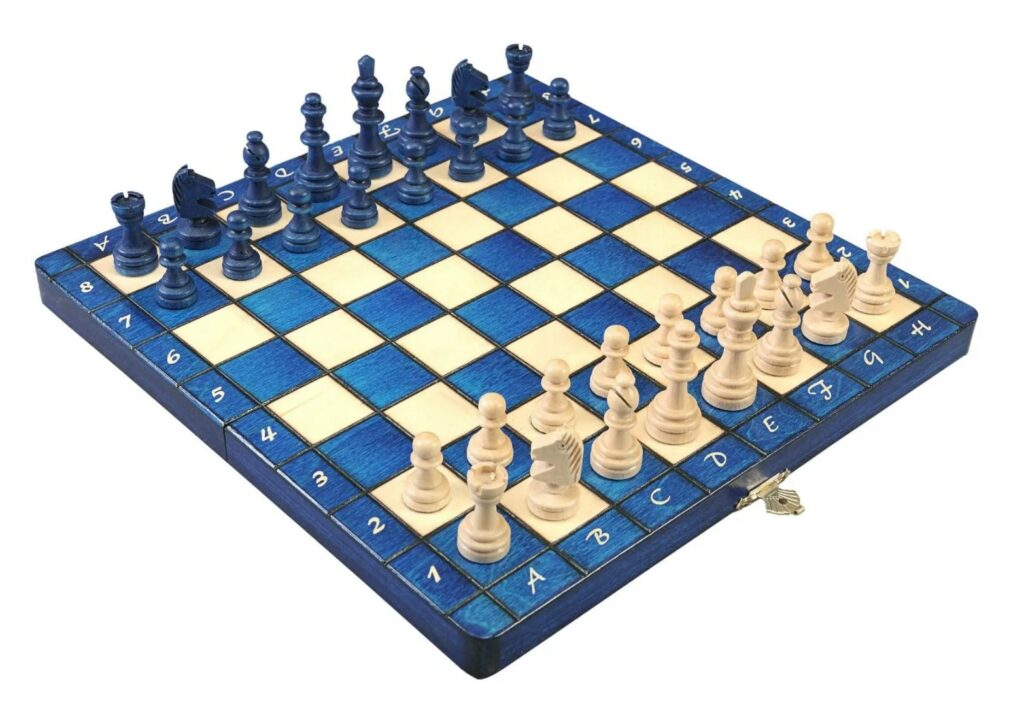
Knight Chess Piece's Aesthetic Appeal
With its unique posture and detailed structure, the knight naturally commands attention on the chessboard. It's usually placed in the center of the board, which helps create an aura of authority and dominance for the piece. The knight features dark and light shadows due to carved contours that give it a three-dimensional appearance.
If we go deeper into the design, then each piece could have an individual effect on the board. For instance, a knight with a raised head and flowing mane can convey a sense of energy and movement. At the same time, a knight with a more subdued posture can show power and stability. While subtle, these nuances help to make the knight more appealing, and its craftsmanship doesn’t go unnoticed.
[product skus="MENWACH40,MENWREY375-BRGR-B,MENWFSP60"]
Design Variety
Here are three of the best high-quality chess sets with exceptional knights:
The Reykjavik II Series Chess Set, Box, and Board Combination
The Reykjavik II Series Chess Set by the House of Staunton is a full tournament-sized set featuring a 3.75" King with a 1.6" diameter base. This set is an exact reproduction of the chess set used by Bobby Fischer during the 1972 World Chess Championship.
Hand-carved by master artisans from the highest-grade woods, these pieces are heavily weighted and feature luxurious billiard cloth base pads.
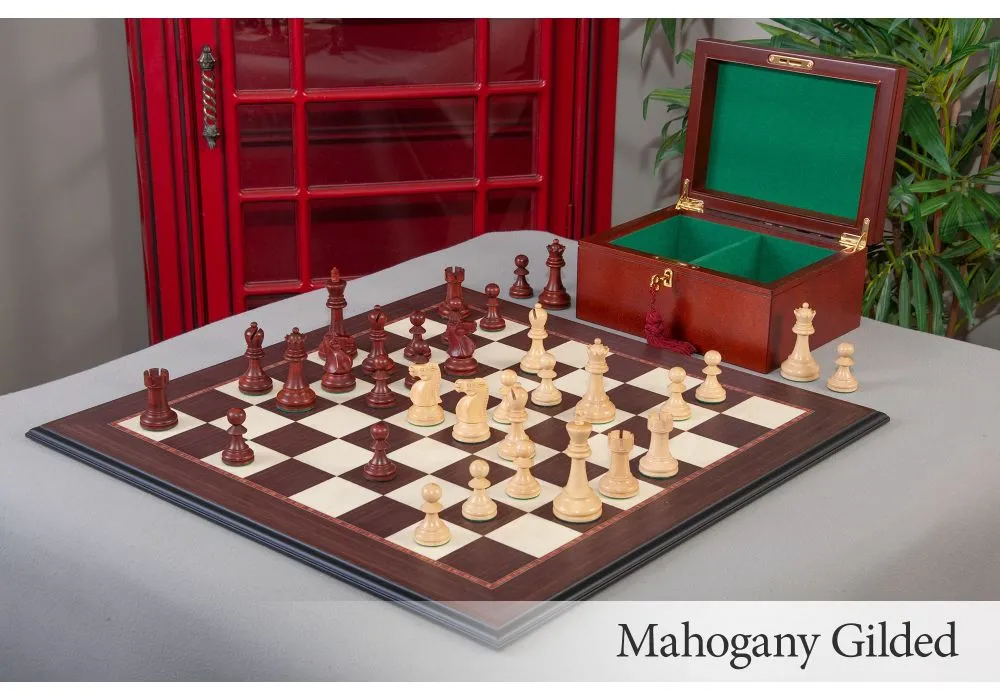
The Grandmaster Chess Set, Box, & Board Combination
Also offered by the House of Staunton, the Grandmaster Series Chess Set features a 4.0" King with a 1.625" diameter base. If you appreciate the beauty of a finely crafted chess set without the hefty price tag, then this is for you.
Designed by the Maestro, this set combines high quality with affordability, making it accessible to a wider range of chess enthusiasts without compromising on craftsmanship.
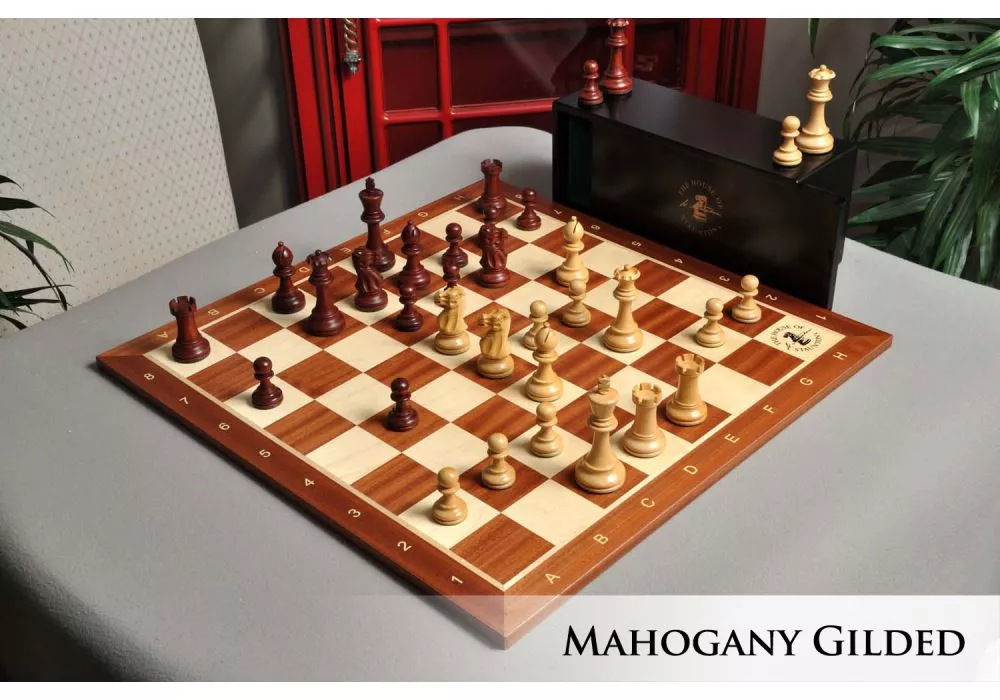
The 2023 Sinquefield Cup Player's Edition Series Chess Pieces
The Player's Edition chess set for the 2023 Sinquefield Cup is a replica of the set used by players in this prestigious tournament. Sponsored annually by the Saint Louis Chess Club, the Sinquefield Cup is a key event in the Grand Chess Tour circuit.
The knight in this set is a replica of those used by top players in a major tournament, blending tradition and modern competition in one place.
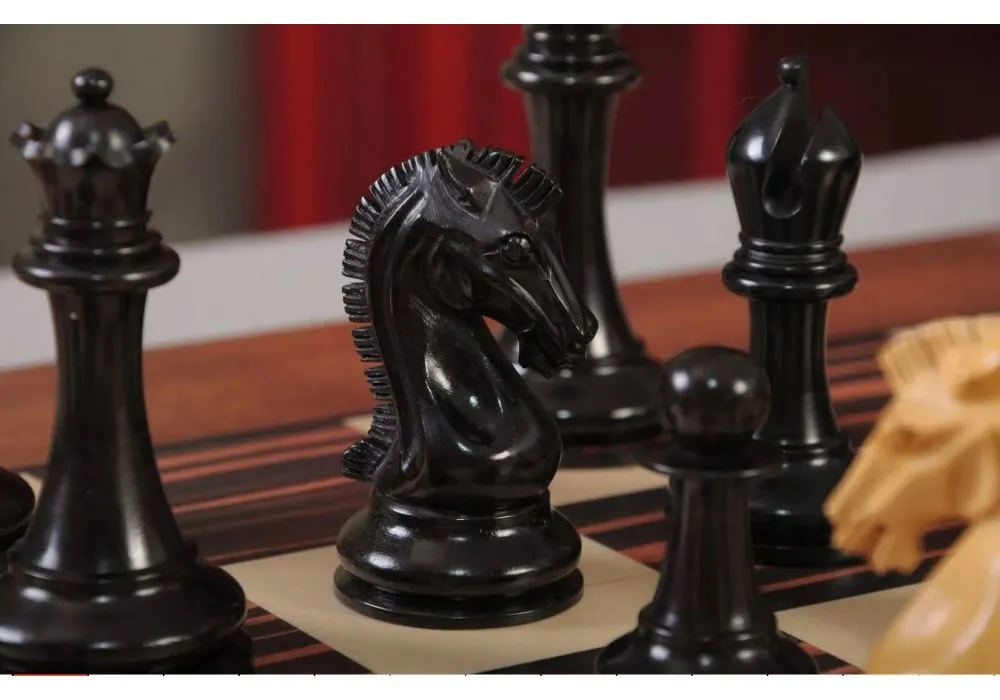
Final Thoughts
The knight, often overlooked as "just" a chess piece, is, in reality, the differentiating factor between a standard chess set and a true collector's item. It's the piece that demands the most skill from the craftsman and one that often catches the eye of the player. Next time you play a chess match, take a moment to appreciate the craftsmanship that goes into the knight’s creation.
Explore the exquisite collection of chess sets at The House of Staunton. From classic Staunton designs to unique themed sets, you will find the perfect knight to grace your chessboard. Visit The House of Staunton today!
Frequently Asked Questions
Avoid exposing the chess pieces to extreme temperatures or humidity. Regularly dust and polish a wooden chess set to preserve its finish. Handle a knight made of bone or other delicate materials with care and avoid exposing it to harsh chemicals.
While materials vary based on preference and budget, traditional options like wood (especially hardwoods like ebony or rosewood) and bone provide the perfect base for artisans to design the knight.
When buying a high-quality knight chess piece, look for detailed carving, premium materials, proper weight and balance, a smooth finish, and any historical or historical significance associated with the design.
Of all the chess pieces on the chess board, a close look at the Knight chess piece will tell you whether the set you are holding is a true work of an outstanding craftsman who creates quality high-end chess pieces.
The Ruy Lopez Opening (sometimes called the Spanish Game) is one of the oldest chess openings. It’s a defense to the move 1.e4, and its first position is reached after 1.e4 e5 2. Nf3 Nc6 3. Bb5
We’ll start off by looking at some of the opening moves - by which we mean the moves at the start where both players fight for control of the center, develop their pieces and get their Kings castled. Since there are many variations, including some quite early into the line, we’ll focus first on the moves played in an old game, then later briefly touch on other possible variations.
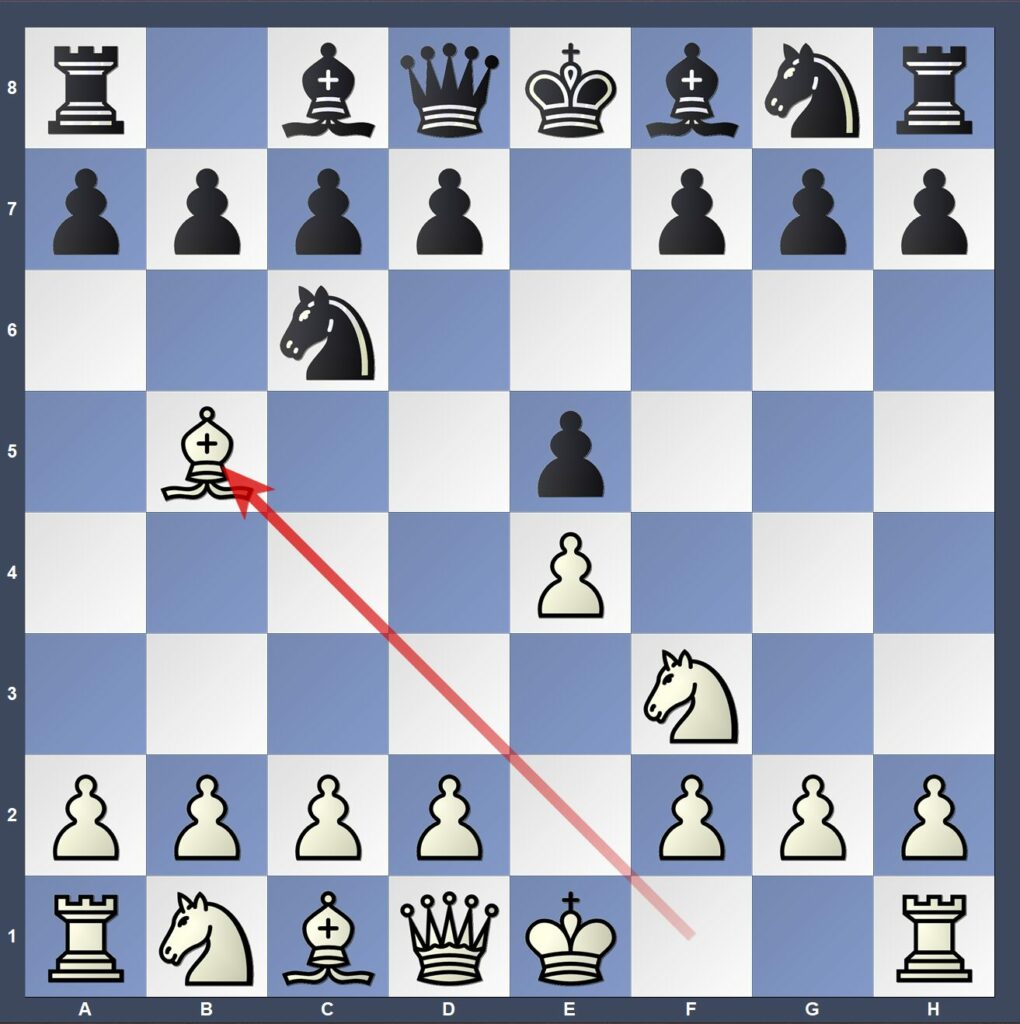
After 3.Bb5 , play has followed a logical path: each side has started with a central pawn and the development of a knight. White has moved their light squared bishop and prepares to castle.
Play usually continues 3…a6 4. Ba4 Nf6, although 3…Nf6, the theoretically important Berlin Defense is also possible. 3…a6 4.Bxc6 dxc6 is the Exchange Variation, with an early eye towards an ending, but it’s not an easy way to win a pawn: 5.Nxe5? is met by 5…Qd4!

Exploring Ruy Lopez Opening Ideas
Let’s explore some typical ideas by playing through a sample game:
After 1.e4 e5 2. Nf3 Nc6 3. Bb5 a6 4. Ba4 Nf6 5. O-O Be7
(5…Nxe4 6. d4 would instead introduce the Open Ruy Lopez), White plays 6. Re1 (Diagram).
By protecting e4 (as with 6. Nc3 or 6. d3), White now threatens Bxc6 followed by Nxe5, so Black must play …b5 or …d6. This is a theme to remember in the Ruy Lopez; often both e-pawns are hanging.
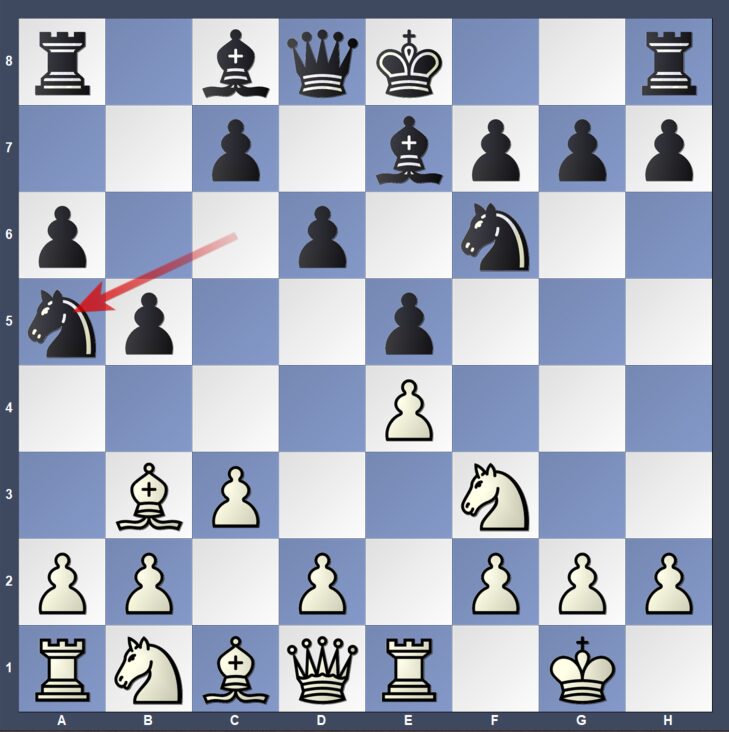
6…b5 7.Bb3 d6 8. c3 Na5 (Diagram). Each side prepares a strike at the center; with c3, White prepares d2-d4 and opens c2 for the Bishop. On the other hand, Black prepares the typical …c7-c5.
The …c7-c5 advance has also been prepared by the move …Nc6-b8, known as the solid Breyer Variation. The game continued: 9. Bc2 c5 10.d4 Qc7 11.Nbd2 O-O 12. h3 (Diagram below)

As Black prepares the Queen to make use of the soon-to-be-opened c-file, White prevents …Bg4 and aims to continue development with Nf1 (a typical maneuver to d5/f5 via e3/g3), Be3 and Rc1.
Tension In the Center
In the next few moves, the tension between the central pawns will be defined. This is important to take note of in our study, as the resulting structure will often determine the nature of the struggle to follow, particularly in regards to plans and piece placement.
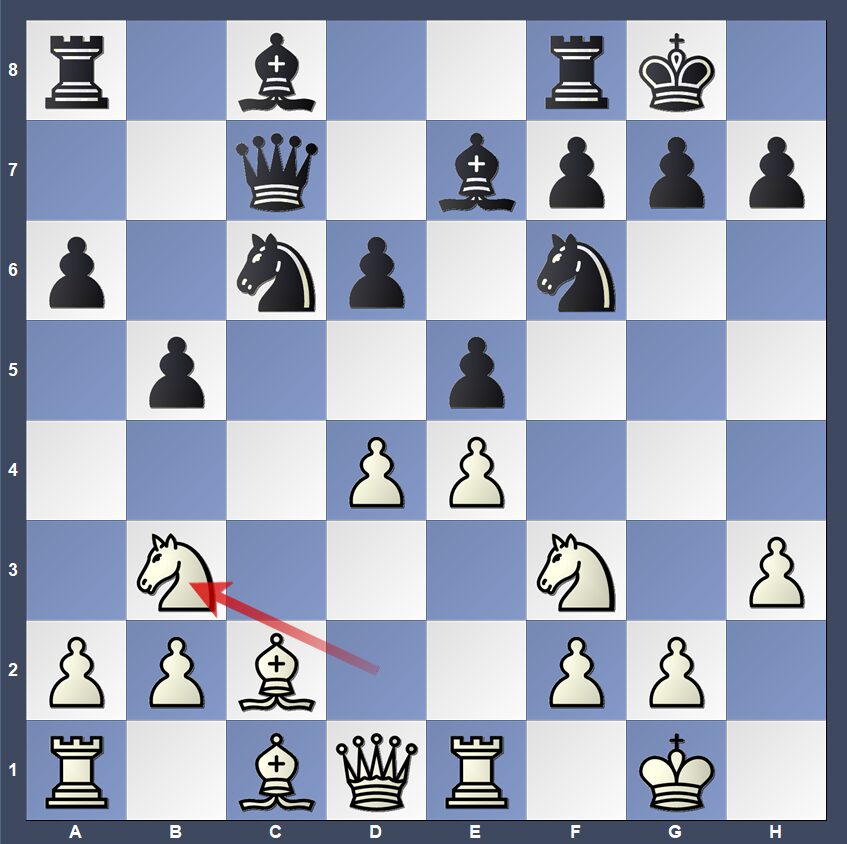
12…cxd4 13. cxd4 Nc6 (centralizing the Knight, and discouraging the intended Nd2-f1 via pressure on d4) 14. Nb3 (Diagram) (If 14. Nf1? Nxd4 15. Nxd4 exd4, when 16. Qxd4? is met by 16…Qxc2.)
14…a5 15. Be3 a4 16. Nbd2 Nb4 17. Bb1 Bd7 Hoping to play …Rc8 and …Nc2 18. a3 (not giving time for Black to use the c-file)
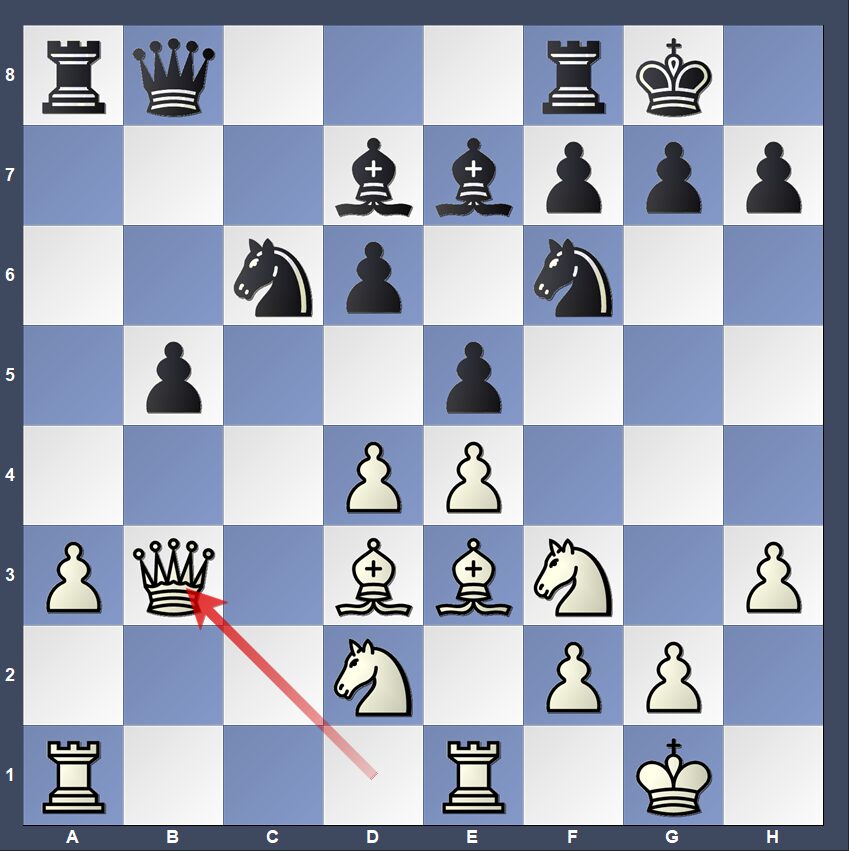
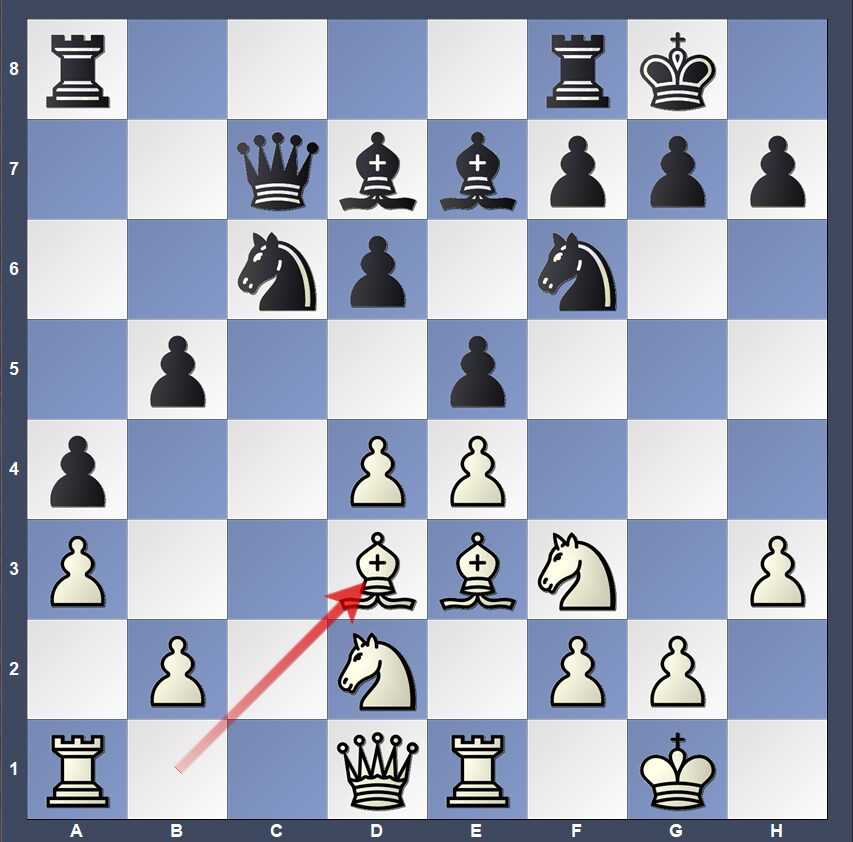
18…Nc6 19.Bd3 (Diagram, Right)
White has prevented any c-file counterplay, and now b5 is weak. 19…Qb8 20. b4 axb3 21. Qxb3 (Diagram, Left) As both sides complete development, we leave the realm of the opening.
The position remains objectively balanced. However, Black later mistakenly dissolved the central pawn tension, when the active White pieces were better prepared for the new, open structure. White developed an initiative and eventually a decisive attack in the game Boleslavsky - Goldenov, USSR Ch 1947.
[product skus="WSC2001,WIN0580CB,CHAMPCOMBO2"]
Since this game was played (1947), there have been many developments in opening theory, even specifically within the Ruy Lopez opening. Let’s leave this “Chigorin” set-up (with …Na5, …c5 and …Qc7), and turn our attention to some other notable variations of the Ruy Lopez.
This exploration will not be exhaustive; entire books have been written on this opening, and each section should serve primarily as an introduction. The reader is encouraged to continue a deeper study of whichever variation looks attractive to integrate into their playing repertoire.
The Marshall Attack
One of the most notorious variations in the Ruy Lopez is a pawn sacrifice offered by the Black side, named the Marshall Attack (or Marshall Gambit) after Grandmaster Frank Marshall, who first played the idea against Grandmaster Jose Raul Capablanca in 1918.
Though Marshall lost that game, the gambit has remained the object of much curiosity and analysis at the highest level for decades. In fact, there’s an entire family of Ruy Lopez opening variations named the anti-Marshalls, aimed specifically at move orders in which White avoids the gambit altogether. Let’s take a look at how we reach the Marshall positions.
After 1. e4 e5 2. Nf3 Nc6 3. Bb5 a6 4. Ba4 Nf6 5. O-O Be7 6. Re1 b5 7. Bb3 Black plays 7…O-O, when 7…d6 could still have reached some other main lines of the closed Ruy Lopez.
White may logically continue with 8. c3 (diagram), aiming for d2-d4 and opening c2 for the B3-Bishop as we’ve already seen. Next is 8…d5!
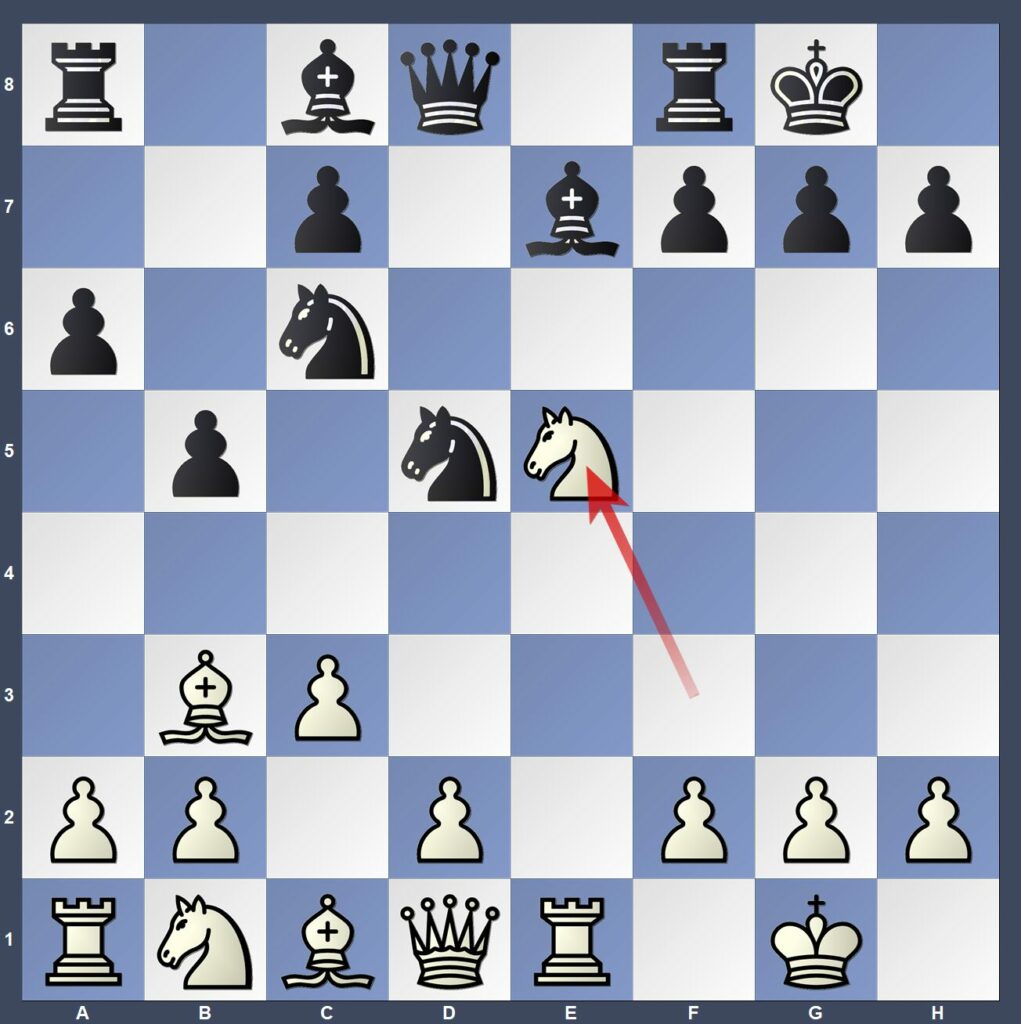
We now see why Black has delayed the d-pawn; the central strike comes
before White’s d2-d4. After 9.exd5 Nxd5 10.Nxe5 (diagram) , it might seem that Black has blundered their e-pawn, forgetting our warning about mutually-hanging pawns at e4 and e5.
However, Marshall, after 10…Nxe5 11. Rxe5 claimed compensation for the sacrificed pawn: While it will take some time for the White Queenside to untangle, Black can develop quickly towards the Kingside.
11…c6 and 11…Nf6 are some of the main responses (the d5-knight was hanging), with further ideas including …Bd6 to gain tempo on the Re5, or a quick …Qh4 to target h2. White will have to work hard to parry threats and catch up in development. Have fun exploring this one!
[product skus="DVD0167FX,DVD0069FX,DVD0020EP"]
Exchange Ruy Lopez
Perhaps one of the oldest variations in the Ruy Lopez openings, White has tried (after 1.e4 e5 2. Nf3 Nc6 3. Bb5 a6) 4. Bxc6! dxc6 (diagram). Of course the B5-Bishop was threatened, so the capture suggests itself as a way to avoid losing time. It must be noted, however, that losing the powerful light-squared bishop (which we’ve often seen dominating diagonals such as a2/g8 or b1/h7) means White is not playing in the most ambitious way.
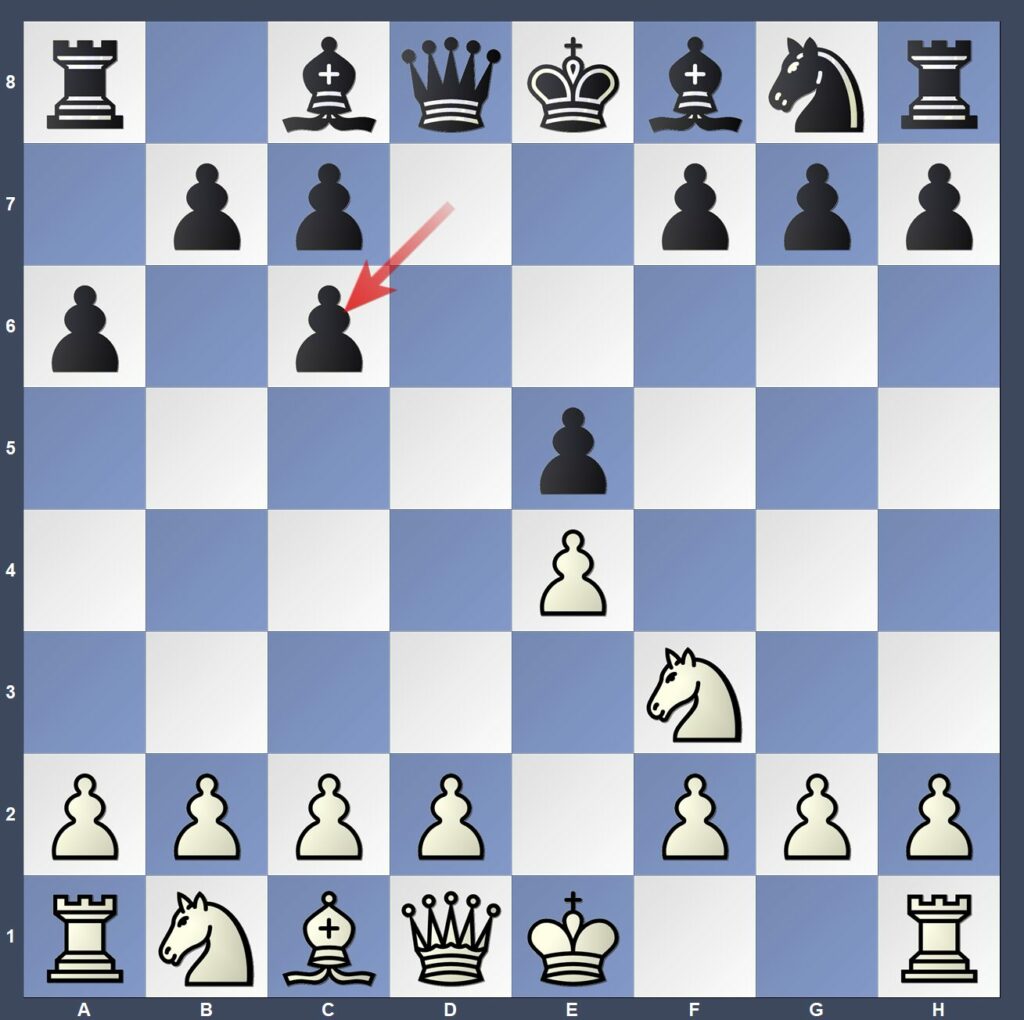
In master practice, Black has equalized with the Bishop pair, but White is not without ideas. Former World Champion Emanuel Lasker was among the notable proponents of the variation, with none other than Bobby Fischer reviving its popularity years later.
White’s argument is essentially to seek an endgame. With a later d2-d4, White’s d pawn will be exchanged for the e5 pawn. The resulting structure is a 4 v 3 Kingside pawn majority. In the long term, White will attempt to use this majority to create a passed pawn. Note that Black’s 4 v 3 Queenside majority will not be as effective in creating a passed pawn, given the doubled c-pawns.
Recall that 5.Nxe5? does not win a pawn due to 5…Qd4! White instead will continue with
5. O-O or 5. Nc3, when often Black covers e5 with 5…f6 or a piece on d6. If you’d like to cut down on theoretical study, or you’d simply like to enter an ending from the start, this variation may be worth taking a further look at.
[product skus="E-B0016EM,E-B0262EM,WIN0509CB"]
Berlin Defense
At the end of the 1990s, World Champion Garry Kasparov needed a challenger to play a match against him for the title. After a spell involving some uncertainty and confusion, Grandmaster Vladimir Kramnik emerged as the challenger, with the match starting in October 2000.
Kramnik won the match, defeating Kasparov with a score of 8.5 - 6.5, by winning two games, drawing thirteen and losing none. His crucial defense against Kasparov’s 1.e4 was the Berlin Defense of the Ruy Lopez. Of the four games in the match in this variation, Kramnik defended them all, with the reigning World Champion unable to crack the now-famous “Berlin Wall.”

This variation is considered key to Kramnik’s victory, and from that moment it has been the focus of much theoretical discussion and analysis. After 1.e4 e5 2. Nf3 Nc6 Bb5, Black opts immediately for 3…Nf6 (diagram), attacking e4 instead of the B5-Bishop with 3…a6.
4. O-O follows, daring Black to capture, with …Nxe4 (obliging).
With 5.d4 White wants to open the e-file, imagining a potential Re1 if the King remains on e8. 5…Nd6 Black vacates the e-file with tempo on the B5-Bishop (which was not asked to move by the a-pawn!) 6. Bxc6 dxc6 7.dxe5 (recovering the pawn) 7…Nf5 8.Qxd8+ Kxd8 (diagram below).

In many ways, this is the starting position for the Berlin Defense; let’s think about some key ideas. White, having castled, has a slight lead in development and King safety. Meanwhile, Black will tuck away their King and try to use their bishop pair.
Boring Berlin
Though it may seem to constitute a simple space advantage, the e5 pawn may also find itself a bit overextended. White must often protect it with pieces, for example by playing b3 and Bb2. On the more active side, a common plan for White is to transfer the B1-knight to the Kingside, and to expand with moves such as h2-h3 and g2-g4.
Although nowadays some strong players dismiss this variation as the ‘Boring Berlin Ending,’ there are still many rich possibilities to investigate for both sides. Even so, many still aim to avoid the line altogether when handling the white pieces. One way to do this, after 3…Nf6, is to simply play 4. d3 (instead of castling), safeguarding e4 straight away. Typical play after 4. d3 may include …Bc5 for Black, and c2-c3 / Nbd2 for White, with a bit more play compared to the quick Queen trade.
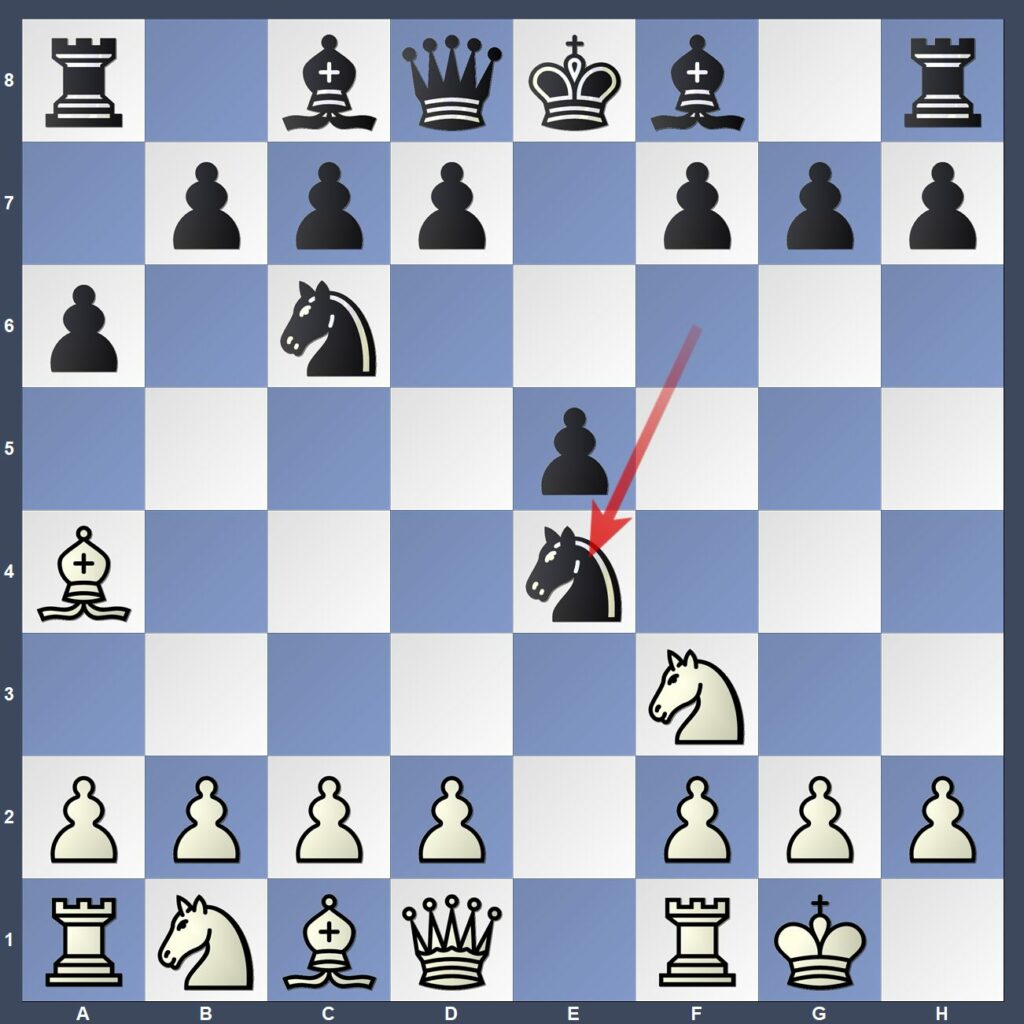
Open Ruy Lopez
One of the most active ways to play the Ruy Lopez is to quickly capture on e4 (as in the Berlin variation, but first playing 3…a6), initiating what is known as the Open Ruy Lopez. The variation arises after the moves:
1. e4 e5 2. Nf3 Nc6 3. Bb5 a6 4. Ba4 Nf6 5. O-O Nxe4 (diagram).
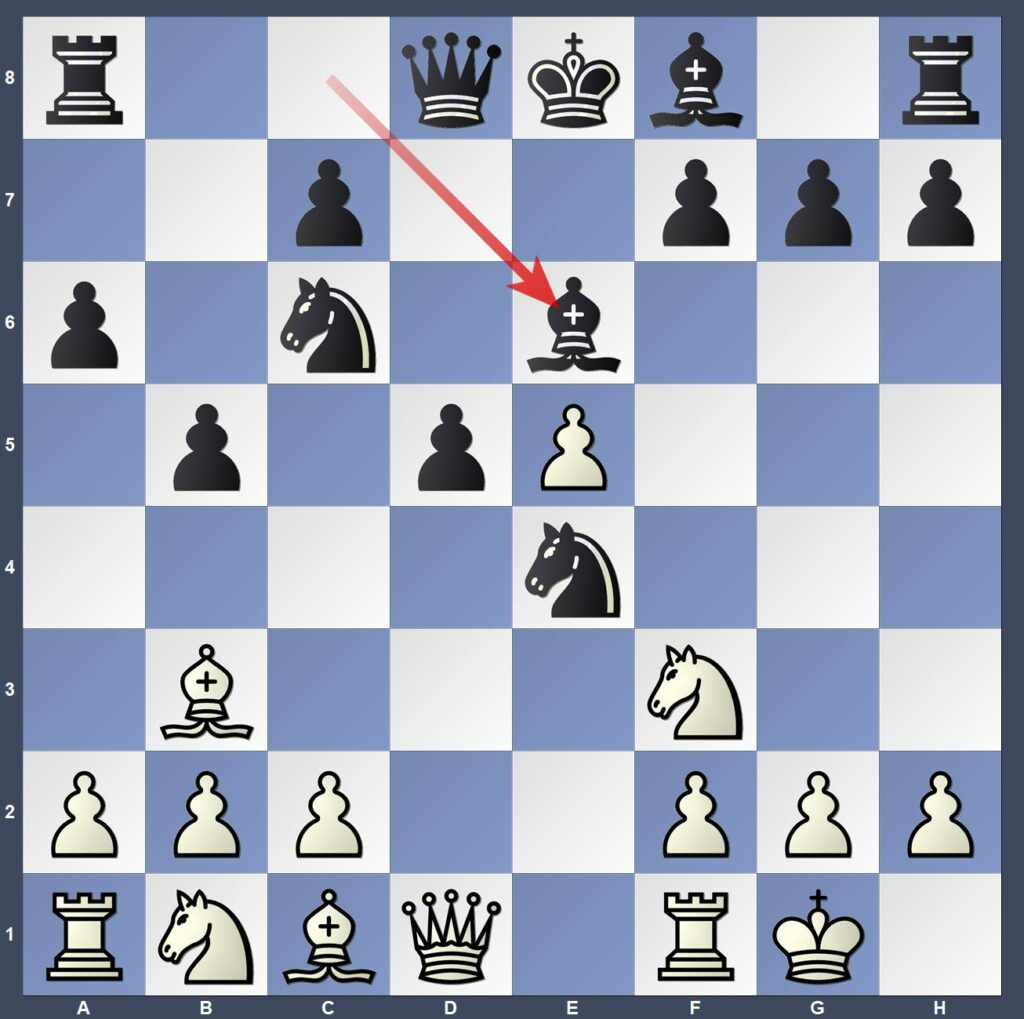
Play usually continues 6. d4 b5 7.Bb3 d5 Black allows the capture of e5, instead prioritizing development. 7…exd4? is too materialistic anyways; White will happily play 8.Re1 and enjoy an advantage based on the open e-file and active a2/g8 diagonal. 8.dxe5 Be6 (diagram).
Theory continues far further than the diagrammed position, including some possible alternatives even in the few moves shown to this point.
However, we can already assess some key characteristics of the struggle in the Open Ruy.
The center pawns (d5 for Black and e5 for White) are not blocked by enemy pawns, and so the center is of a dynamic, or mobile nature. Blockading the enemy pawn (as with …Be6 for Black, or potentially occupying d4 for White) may keep some threats at bay, but a timely push (i.e. …d5-d4 or e5-e6) can often bring a strong initiative to the executing side.
[product skus="WIN0404CB,B0087TH,WIN0297CB"]
It may seem that Black will face difficulties for not having castled yet, but with a proper handling of the position, these positions can always contain three results. If you take up this variation, be sure to play dynamically and for active pieces. Eventually, (as in many other variations of the Ruy Lopez), removing the c6-Knight and playing …c7-c5 may represent a general, short term goal to execute.
Frequently Asked Questions
Try playing a few games; you may notice some positions feel more natural to you than others; go for variations you can play more easily
Firstly, there are many variations in the main line (closed) Ruy Lopez that have been omitted for space. If those don’t suit you either, you can simply try a different defense to 1.e4 altogether!
Just as important as playing, is analyzing your games. Find where the position started getting out of control, and compare to master games in the same line. It can be quite useful to see how a strong player handles your positions; take notes to use similar ideas in your own games!
Bibliography
Shaw, J. (2003). Starting Out: The Ruy Lopez. Everyman Chess.
Soltis, A. (1992). Chapters 1-4. In Opening Ideas and Analysis for Advanced Players (Vol. 2, pp. 1–81). essay, Chess Digest.
Suetin, A. (1991). The Complete Spanish. Henry Holt and Company, Inc.
The Ruy Lopez opening is one of the most well-known and popular in chess. Many argue that mastering it is key to taking your game to the next level.
Did you know that from the opening of a chess game, there are about twenty different chess moves to start the game? And that is just the beginning; the number of moves grows with each decision a player makes during the game. This enormous variety is what makes chess such a fascinating game for novice and expert players.
Chess has captivated people for decades because it is not just a game; it's a mathematical puzzle. The depth of a game on this eight-by-eight board is complex, but once you understand it, you can appreciate the strategy behind each move. But the question is, how many moves are there in a chess game?
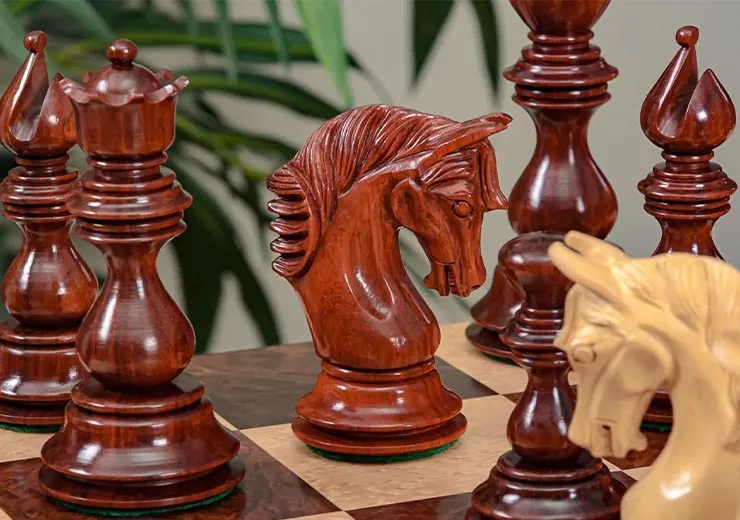
Table of contents
Understanding Chess Moves
To understand the possible moves in a chess game, you must understand how each piece moves. Each chess piece has its own pattern and, therefore, its own moves. For a better understanding, breaking down these fundamental moves helps.
Basic Chess Moves
Here are some of the basic chess moves:
Pawns
Pawns move one square but capture diagonally. On their first move, however, they advance two squares. While it seems like this is limiting since each pawn moves either one or two times, pawns control the board and set up defences for their pieces.
Knights
Knights have the most unusual pattern in the game and usually move between five to ten times. They move in an L-shape, two squares in one direction and one in perpendicular. Through this, they jump over other pieces and are one of the most important pieces in the game.
Bishops
Next in the game are the bishops, which move diagonally; however, the twist is that one bishop can move diagonally on only the white squares while the other moves only on the white. So the number of moves depends on how well a player strategizes, but on average, they move around five to ten times in a game.
[product skus="CLUBCOMBO2,GRANDCASKCOMBO,TQGCOMBO"]
Rooks/Castles
Rooks, often called Castles or chess towers because of their shape, are seen as protectors to the King and Queen. They can move vertically and horizontally across any number of squares. These are very powerful, especially when used with the Queen.
Queen
The Queen is the most formidable piece on the chessboard, combining both the rook and bishop’s movements. This means she can move at any number of places on the board horizontally, vertically, and diagonally. This makes her the favorite for many chess players.
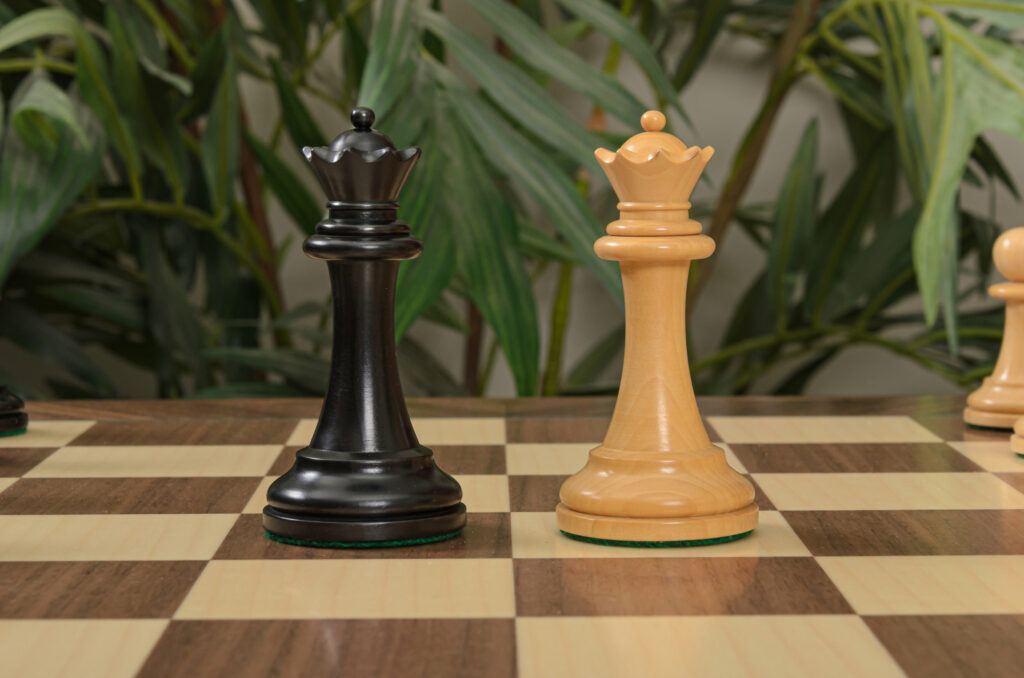
King
The King moves one space in any direction, limiting its movements between two or five moves. Though not as strong as the Queen, the King’s movements are an important part of the game, especially the endgame, as the goal is to keep him safe.
Special Chess Moves
In addition to these basic moves, you can count special or expert moves often used during the game. Some of the most common are:
Castling
Castling involves the king and either rook. The king moves two squares towards the rook, and the rook jumps to the square next to the king. Castling can only occur if neither piece has moved before, there are no pieces between them, and the king is not in or moving through check.
En Passant
This rare pawn capture can occur when a pawn moves two squares forward from its starting position, and an opposing pawn could have captured it if it had moved only one square. However, the capture must be made immediately on the next move.
[product skus="B0174TH,B0023SS,B0233NIC"]
Pawn Promotion
When a pawn reaches the farthest row from its starting position, it is eligible for promotion to any other piece, except a king. Due to her power, this is usually a queen, but sometimes a knight, bishop, or rook is chosen as a strategic alternative.
Staunton Pro Tip: If you learn notations, you can record the moves and figure out your average ones within a game. Each square on the chessboard is identified by a coordinate, such as ‘a1’ for the bottom-left corner. Moves are noted by the initials of the piece; K for King or Q for Queen or the destination of the pawns, such as e4 for a pawn move or nf3 for a Knight move. chess algebraic notations are written in bold so they stand out.
Calculating Possible Chess Moves in a Single Position
The number of possible chess moves at any given moment can vary significantly depending on the stage of the game. From the opening moves to the intricate mid-game and down to the strategic endgame, understanding how the number of potential moves fluctuates can provide deeper insights into the complexity of a chess game. Let’s break down how these possibilities evolve as the game progresses.

Initial Positions
From the initial setup of a chess game, there are twenty possible moves: each of the eight pawns can move forward either one or two squares, and each of the two knights can jump to one of two different squares. This relatively small number quickly expands as the game progresses, introducing more pieces into play and creating many potential positions.
Mid Game Positions
When the game moves into the midgame, it becomes drastically more complex. Once pawns and knights have started moving, bishops, rooks, queens, and the king begin to play more active roles. Each additional piece that moves opens up new possibilities, leading to a substantial increase in the number of possible moves. It's estimated that in a typical mid-game position, there can be anywhere from thirty to forty possible legal moves. This variety is what makes each chess game unique and strategically rich, as players must consider multiple factors and anticipate their opponent's responses by using valuable information from expert sources.
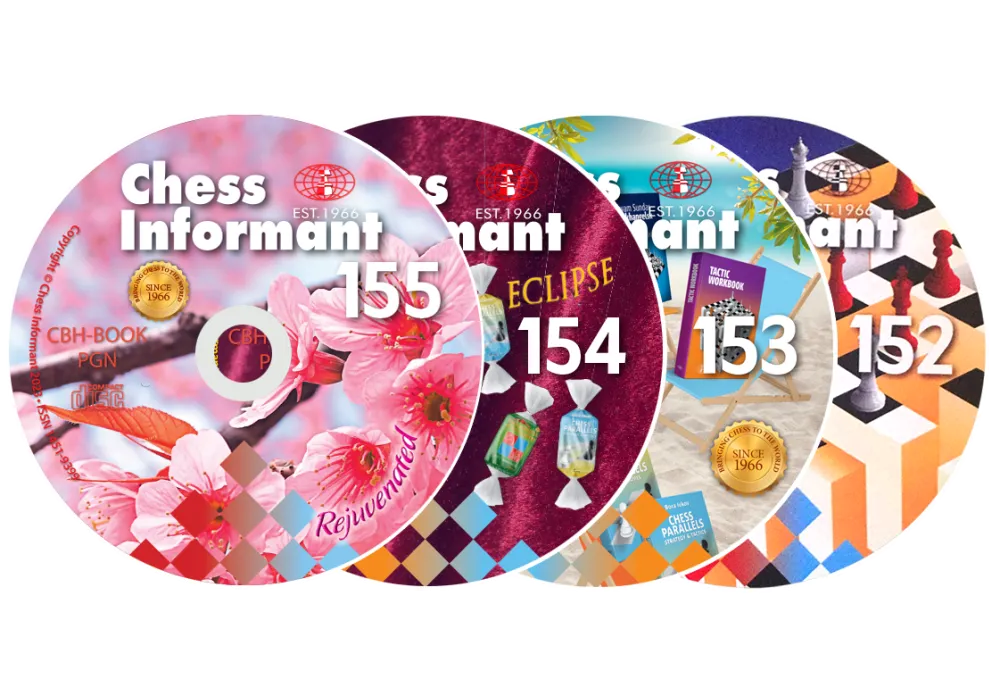
Endgame Positions
As pieces are captured and the board empties, the number of possible moves starts to decrease. In the endgame, with fewer pieces left, the focus shifts to precise maneuvering and strategy. The remaining pieces - often just kings, a few pawns, and possibly a rook or minor piece - these have fewer possible moves, typically around twenty. The reduced complexity, however, makes the game more challenging. The endgame requires deep calculation and understanding of theoretical positions to secure a win or force a draw.
The number of possible chess moves varies widely throughout the game. From a modest twenty possible moves in the initial position, it explodes to dozens in the mid-game before contracting again in the endgame. This shift in possible moves makes chess an intellectually stimulating game, requiring players to adapt their strategies and think several moves ahead constantly..
Total Possible Chess Moves in a Chess Game
Calculating the possible moves in a chess game is nearly impossible. As established, the potential number of moves expands as the game continues. However, three concepts can help determine the closest thing to an estimated number of moves within a chess game.
Shannon Number
One of the most famous estimates in chess is the Shannon Number, which is named after the mathematician, Claude Shannon. He estimated that there are between 1043 and 1050 positions in a chess game. Simply stated, 1043 means the number 1, followed by forty-three zeroes, and 1050 means the number 1 followed by fifty zeros. These massive numbers highlight just how many different ways a chess game can unfold, underscoring the game's depth.
The Game Tree
In chess, a game tree represents all possible moves from a given position, branching out with each subsequent move. Starting from the initial position, each possible move leads to a new position, each of which branches out into further moves. This tree-like structure continues to expand as the game progresses. The initial branching factor is around twenty, but the number of branches increases as more pieces are developed, t. This tree illustrates the decision-making process in chess, where each move opens up a new set of possibilities and strategies.
Exponential Growth
The number of possible moves in a chess game grows exponentially with each turn. From the initial position, there are twenty possible moves. After each player has moved once, there are about four hundred possible positions. With each subsequent move, the number of possible positions increases exponentially. For example, after two moves each (four plies), there can be as many as 197,742 possible positions.
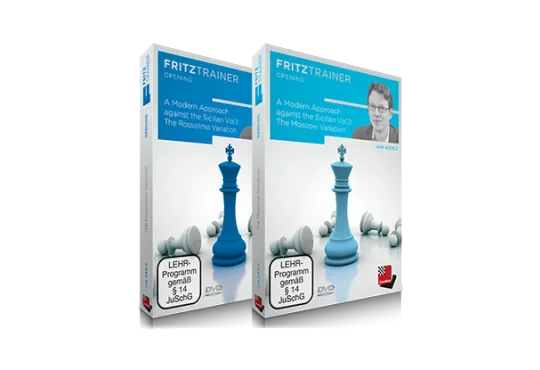
This exponential growth continues throughout the game, making the number of possible moves extraordinarily large. This growth pattern explains why chess computers need immense processing power to evaluate potential moves several turns ahead. Even with advanced algorithms, predicting the best move involves sifting through millions of possible outcomes.
Factors Influencing Possible Moves
Many factors influence how many moves there are in a game. These include the official rules of the game, the players’ experience, and the strategies used throughout the game. Once you understand how these factors impact the game, you can get an idea of the probable moves in each chess game.
Rules and Regulations
The rules of each chess game limit the number of moves that can be made. For example, the 50-Move Rule states that the game can be declared a draw if fifty moves pass without any pawn movement or piece capture,. Another rule is threefold repetition, where a game can be drawn if the same position occurs three times with the same player to move and all possible moves being the same. These rules prevent games from continuing indefinitely and limit the number of moves.
[product skus="B0001USCF,B0522EM,B0019OB"]
Tactics and Strategies
Strategic considerations greatly influence the choice of moves in a game. Players often follow opening principles, such as controlling the center and developing pieces, which reduce the number of reasonable moves to a manageable subset. As the game progresses, tactics like forks, pins, and skewers come into play, further influencing move choices. Strategic goals, such as attacking the opponent’s king or creating a passed pawn, also guide players’ decisions.
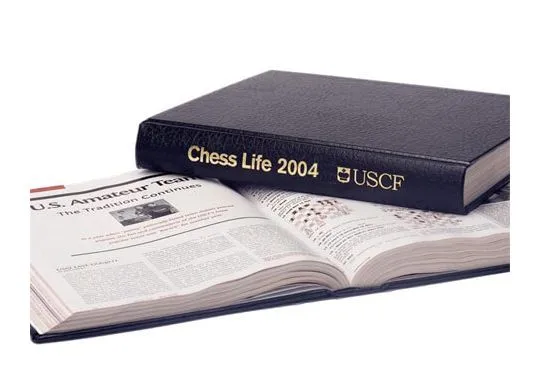
Players Skill Level
The skill level of the players also controls how many moves can be made within a chess game. A beginner would likely only see some of the potential moves and make straightforward, obvious choices. However, advanced players would analyze possible moves and plan deeper strategies or tactics. Grandmasters or chess engines can evaluate even more moves, increasing a game's complexity.
Conclusion
A chess game has a staggering number of possible moves, highlighting its extraordinary complexity and depth. You change and control this number from your first move to the last. Each move allows you to make the game more fascinating, practice your creativity, and ultimately master the game. So, the answer to the question of, ‘how many chess moves are there?’ is nearly infinite. If you want to know more, you can have a look at books, resources, and more from experts like House of Staunton.
The total possible number of chess moves in a game is mind-boggling. So how many are there, and what possible combinations are there?
Chess, a game rich in history and intellectual challenge, has seen some of the most extraordinary battles of wits and strategies unfold on its sixty-four squares. For those looking to deepen their understanding and skill, studying the most famous chess games can be both inspiring and educational.
These seven famous chess games showcase the brilliance and creativity of the greatest chess minds, offering timeless lessons that every enthusiast should appreciate and learn from.
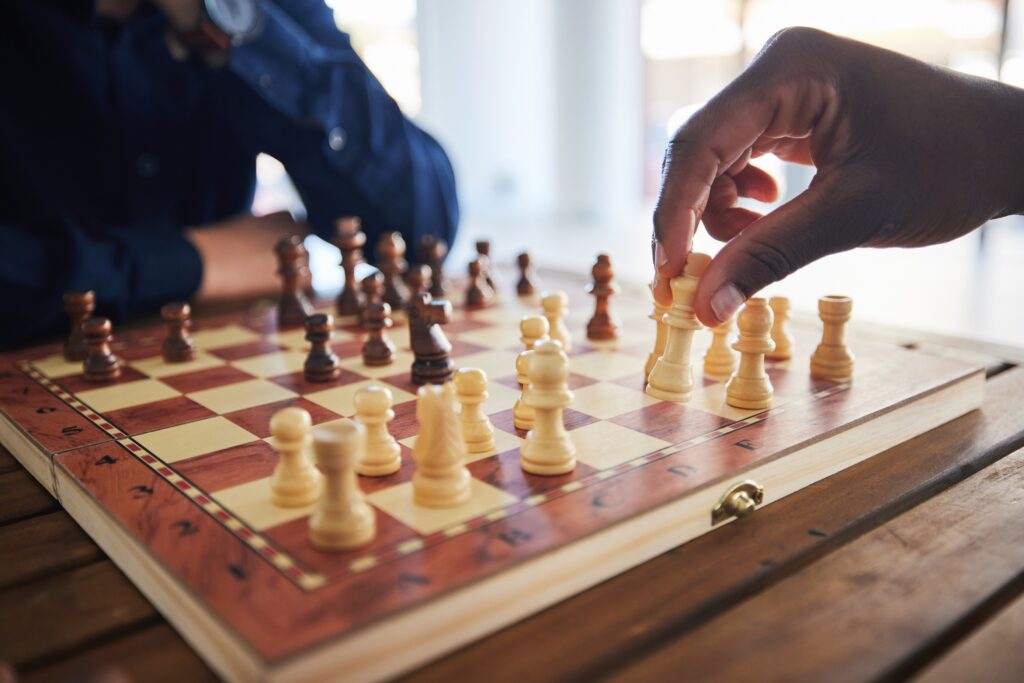
1. Kasparov vs. Karpov, 1985 (World Championship Match)
The 1985 World Chess Championship was a momentous event held in Moscow, from September 3 to November 9, between Anatoly Karpov and Garry Kasparov. This match, following the contentious 1984 championship, saw Kasparov emerge as the youngest World Champion at age 22, making it one of the most famous chess games in history. The 1984 match had been halted after 48 games and 5 months, marking the first time a world championship ended without a result. The political backdrop, with Kasparov seen as representing the "new Russia" and Karpov as the "old guard," added layers of intrigue to their encounters.
Karpov entered the 1985 match with a FIDE rating of 2720, slightly higher than Kasparov's 2700. Despite their age difference – Karpov being 34 and Kasparov 22 – both were in top form. Karpov had just won the OHRA tournament in Amsterdam, while Kasparov had triumphed in matches against Robert Hübner and Ulf Andersson.
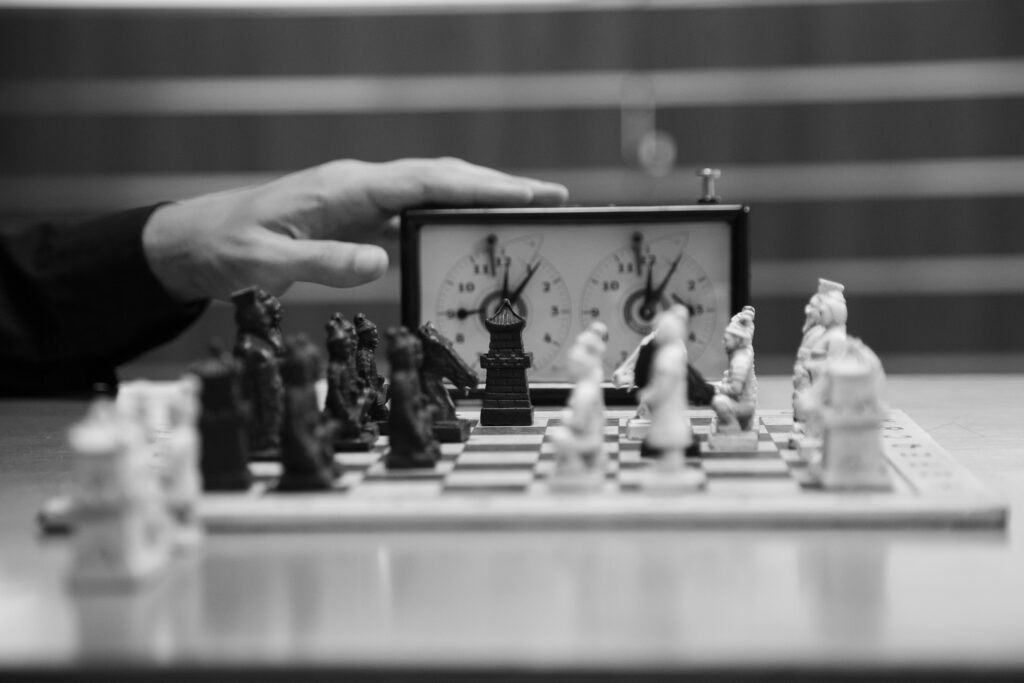
The match rules, modified due to the previous year's protracted contest, stipulated a 24-game limit, with Karpov retaining the title in the event of a 12-12 draw. Kasparov's aggressive play style was evident from the first game, where his novel opening choices left Karpov off-balance. The venue, Moscow's Tchaikovsky Concert Hall, provided a fitting stage for this historic clash.
Kasparov's strategies in games 1 and 16 were particularly noteworthy, demonstrating his deep preparation and bold tactics. His victory in the final game, after a series of errors by Karpov, sealed his place in history as the new World Champion.
2, Fischer vs. Spassky, 1972 (Game 6)
The 1972 World Chess Championship, dubbed the "Match of the Century," featured American challenger Bobby Fischer and Soviet champion Boris Spassky. Known as one of the famous chess matches held in Reykjavík, Iceland, the match symbolized Cold War tensions between the US and the Soviet Union. Fischer, known for his eccentric behavior and exceptional talent, became the first American-born player to win the world title, ending 24 years of Soviet dominance.
Fischer's path to the championship was marked by dominant performances in the Candidates matches, where he defeated top grandmasters with perfect scores. Despite never having beaten Spassky before, Fischer's superior Elo rating of 2785 made him the pre-match favorite. The match began on July 11, 1972, with Fischer's unpredictable demands and delayed arrival. Intervention by British banker Jim Slater and a persuasive call from Henry Kissinger secured Fischer's participation.
Throughout the match, Fischer surprised Spassky with varied opening strategies, deviating from his usual repertoire. This strategy, combined with his deep preparation, allowed Fischer to gain an early lead. The match concluded with Fischer winning 12½–8½ after Spassky resigned in the final game. The championship was widely broadcast, skyrocketing chess's global profile and marking a significant moment in Cold War cultural history.
3. The Immortal Game (Anderssen vs. Kieseritzky, 1851)

The Immortal Game, played in 1851 between Adolf Anderssen and Lionel Kieseritzky, is one of the most famous chess games ever. It took place during a break in the London 1851 chess tournament, though it was a casual game, not part of the competition. Anderssen's victory involved a spectacular double rook sacrifice and a mating attack with his minor pieces, impressing Kieseritzky, who later published the game in the French chess journal, La Régence. In 1855, Ernst Falkbeer dubbed it "The Immortal Game."
The game is celebrated for its bold sacrifices and tactical brilliance, hallmarks of the romantic era of chess. Despite modern critiques of some moves as unsound, the game is a favorite in chess literature for illustrating aggressive play and creative tactics. Anderssen's sacrifices included a bishop on move 11, both rooks starting on move 18, and the queen on move 22, culminating in a checkmate with his remaining minor pieces. This style, emphasizing rapid development and daring attacks, exemplifies the 19th-century romantic school of chess, making the game a timeless example of chess aesthetics and strategy.
4. The Opera Game (Morphy vs. Duke of Brunswick and Count Isouard, 1858)
Sitting amongst the famous games of chess, The Opera Game was an 1858 chess match played in a Paris opera house. American chess master Paul Morphy faced two strong amateurs: German noble Karl II, Duke of Brunswick, and French aristocrat Comte Isouard de Vauvenargues. It was a consultation game, with Duke Karl and Count Isouard jointly deciding each move for the black pieces, while Morphy controlled the white pieces alone. The game, played during a performance, saw Morphy quickly checkmate his opponents following a queen sacrifice.
This game is renowned for teaching key chess principles such as piece development and the value of sacrifices in mating combinations. Morphy's rapid development and aggressive tactics, including a spectacular queen sacrifice, led to a swift victory. The game is often used in chess literature to illustrate these themes.
Morphy’s opponents chose the Philidor Defense, but their 3...Bg4 move was inferior, allowing Morphy to take control. After 7. Qb3, Morphy's relentless attacks forced black into a defensive position. The critical moment came with 10. Nxb5!, a knight sacrifice that opened up the board and led to a decisive advantage for Morphy. The game concluded with Morphy’s famous queen sacrifice 16. Qb8+!, followed by checkmate on the next move. This match, known for its dramatic and instructive play, remains a classic example of 19th-century romantic chess.
5. Deep Blue vs. Garry Kasparov, 1997 (Game 6)
Game 6 of the 1997 Deep Blue vs. Garry Kasparov rematch, played on May 11 in New York City, marked a historic moment in chess history. This game concluded the series with Deep Blue's victory, making it the first time a computer defeated a reigning World Champion in a multi-game match. Before this game, the score was tied at 2½–2½, with Kasparov winning the first game, losing the second, and drawing the next three.
[product skus="DVD0008CLS,WIN0683CB,E-DVD0101CL"]
In this decisive game, Kasparov chose the Caro-Kann Defense, a solid but somewhat passive opening. Deep Blue, however, executed a well-prepared strategy, breaking traditional opening principles but putting immediate pressure on Kasparov. The key move, 5. Ng5, aimed at exploiting the weak f7 square. Kasparov’s response, 7. ...h6, was a blunder, leading to a powerful knight sacrifice by Deep Blue with 8. Nxe6.
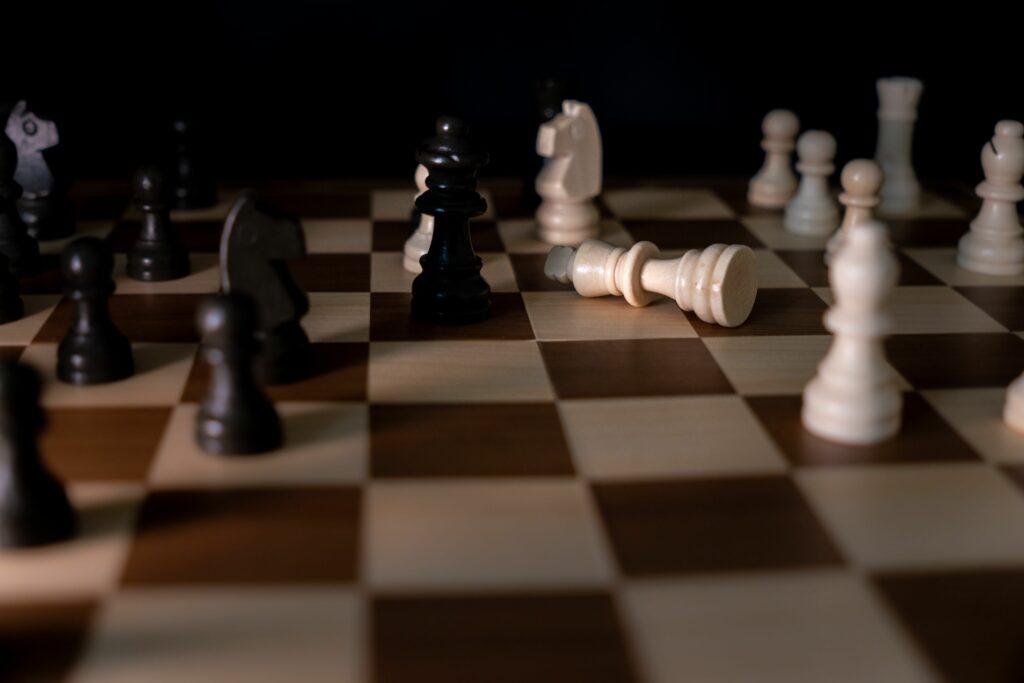
Kasparov's position quickly deteriorated, and he resigned after just 19 moves, a game lasting barely over an hour. This defeat drew significant media attention and marked a turning point in the relationship between human and computer capabilities in chess. Despite Kasparov's claims of unfair assistance, IBM – the company behind Deep Blue - ended the Deep Blue project, leaving this match as a landmark in chess history.
6. Botvinnik vs. Capablanca, 1938 (AVRO Tournament)
On November 22, 1938, Mikhail Botvinnik, playing white, defeated José Raúl Capablanca in one of the most famous games in chess history. The game took place during round 11 of the AVRO tournament in Rotterdam. Capablanca, a former World Champion from 1921 to 1927, faced Botvinnik, who would later become World Champion from 1948 to 1957.
Garry Kasparov praised the game, calling it Botvinnik's "game of his life." He suggested it should be named "peerless" or "classical" due to its brilliance. This was the last encounter between the two before Capablanca's death in 1942. They had played seven competitive games before, including a drawn game with opposite colors in the same tournament.
[product skus="FSP60COMBO,VARNACOMBO2,CAPACHESSCOMB-BR"]
The game featured the Nimzo-Indian Defense: Normal Line. Botvinnik's strategic play involved sacrifices and tactical combinations. The critical moment came with 29...Qe7, leading to Botvinnik's famous 30.Ba3!, drawing the black queen away and paving the way for victory. Botvinnik's 31.Nh5+ was a decisive sacrifice, leading to a series of forced moves resulting in a winning position. Capablanca resigned, unable to stop the advancing pawn and impending checkmate.
This game is celebrated for its strategic depth and is often studied for its exemplary tactics and endgame play.
7. Tal vs. Botvinnik, 1960 (World Championship Match)
The World Chess Championship between former champion Mikhail Botvinnik and champion Mikhail Tal took place in Moscow from March 15 to May 13, 1961. Tal had previously defeated Botvinnik in 1960, making Botvinnik entitled to a rematch the following year. Botvinnik won the world title decisively with a score of 13–8, despite Tal being favored due to his previous victory and being 25 years younger.
Botvinnik's victory came from his superior strategy and ability to counter Tal's aggressive playing style. It was not known at the time, but Tal suffered from kidney illness in 1962. IIn 2002, Yuri Averbakh revealed that Tal had health issues during the match and that doctors in Riga had advised him to postpone. Botvinnik agreed to a postponement only if certified by Moscow doctors, so Tal decided to play despite his condition.
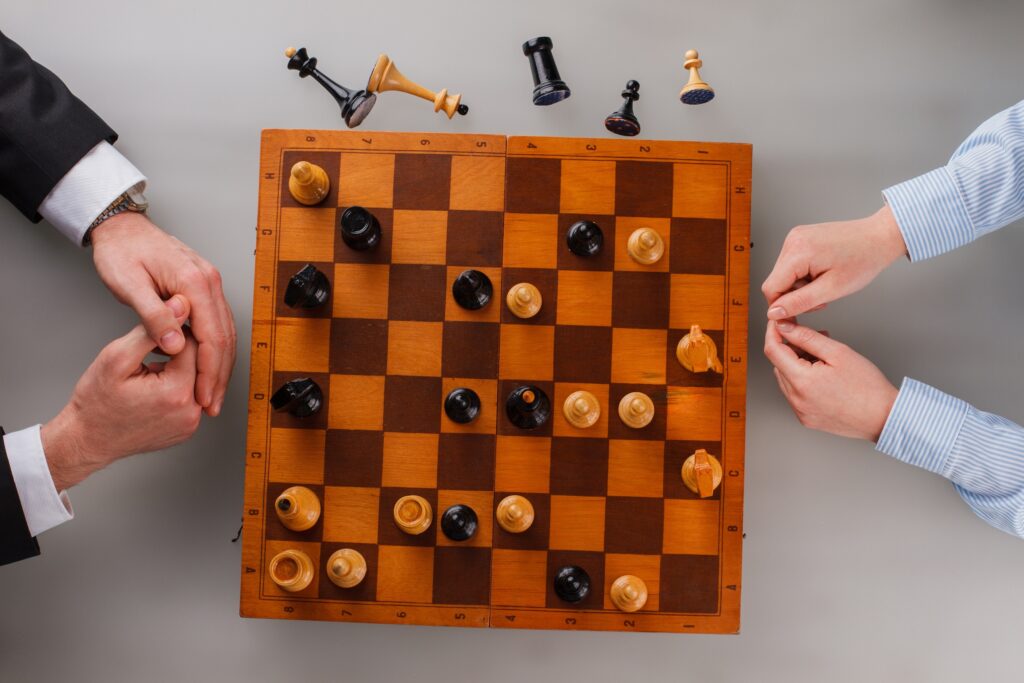
This win made Botvinnik the first and only person to have three separate reigns as World Champion. At 49 years old, he also became the oldest player to win a World Championship match since 1892. When 55-year-old Wilhelm Steinitz defeated Mikhail Chigorin. Tal played the match over 24 games and retained the championship if it ended in a 12–12 tie.
Why Memorize These Games?
Memorizing these famous chess games can provide several benefits:
- Strategic Insights
Understanding the strategic plans and tactical themes employed by great players can deepen your own strategic understanding. These games illustrate various strategic concepts such as control of the center, king safety, and the importance of development.
- Tactical Skills
Analyzing complex combinations and sacrifices improves your tactical vision. Games like "The Immortal Game" and Tal's victories sharpen your ability to spot and execute combinations.
- Historical Context
Appreciating the historical significance of these games connects you to the rich heritage of chess. Each game reflects the styles and ideas of its time, offering a window into the evolution of chess thinking.

How to Memorize these Games
- Break Down the Game: Segment into openings, middlegames, and endgames. Understand the principles and tactics behind each phase.
- Use Chess Notation: Learn algebraic notation to follow and record moves, aiding in replaying games on physical or virtual boards.
- Replay Regularly: Set up a board and replay moves repeatedly to reinforce memory.
- Understand the Ideas: Comprehend the strategies behind moves for better retention.
- Visualize: Practice visualizing the board and pieces mentally.
- Use Software and Apps: Tools like ChessBase offer annotated game replays.
- Study Annotations: Read grandmaster analyses for deeper insights.
- Practice with Puzzles: Use puzzles based on famous positions to recognize patterns.
- Mnemonics: Use memory techniques like the Dominic or Major System.

Takeaway
By studying and committing these seven famous chess games to memory. You will not only help your appreciation for the game's history but also improve your own playing skills. Each game provides unique lessons in strategy, tactics, and creativity, making them invaluable resources for any serious chess player.
These games are not just about moves and strategies. They tell stories of human ingenuity, rivalry, and the relentless pursuit of excellence. Whether you're a novice or an experienced player seeking inspiration, these games offer timeless lessons that will enrich your game. Pair that with a unique chess set from House of Staunton and you are well on your way to becoming a chess master.
Discover the seven most famous chess games to master strategies, improve your skills, and gain historical insights. Perfect for both novices and experts looking to up their game
Chess isn’t just a game; it’s a test of patience, strategy, and the ability to think several moves ahead. Becoming good at it doesn’t happen overnight – it takes dedication and practice. One of the best tools to help you on your journey to mastery is a chess practice board.
A practice board allows you to focus on specific aspects of the game, like openings, tactics, and endgames, without the pressure of a full match. In this article, we will explore some practical tips and techniques on using a chess practice board to sharpen your skills and help your game. So, let’s see how this simple board can make a big difference in your learning process.
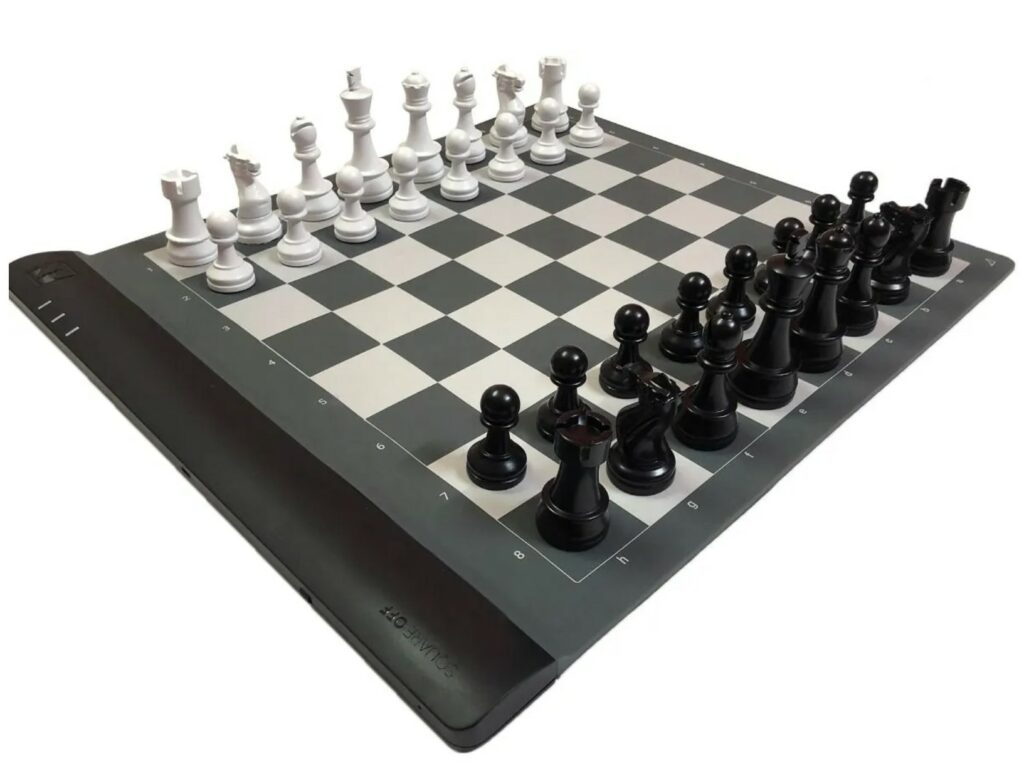
What is a Chess Practice Board?
A practice board is your secret weapon for sharpening your chess skills. Unlike regular chess sets that are perfect for a friendly game, practice boards come with features designed to boost your learning and development. They can be high-tech electronic boards that connect to chess programs and online resources, giving you an immersive learning experience, or they can be simple physical boards with standard pieces and notation marks. These practice boards are all about helping you get better, faster. They typically have:
- Standard pieces
- Notation marks for easy reference
- Foldable or portable design
- LED indicators for move suggestions
- Connectivity to chess software
- Integration with online platforms
- Real-time feedback and analysis
- Interactive learning experiences with tutorials and exercises
Why Should You Get a Practice Chess Board?
Using a chess practice board, you can move pieces around and see positions more clearly, helping you grasp the fundamentals of the game. It’s perfect for focused training on specific aspects without the distractions of a full game. Plus, you can practice anytime, anywhere – at home, in the park, or even on a trip. Portable practice boards, like the Square Off Pro Chess Computer, make it easy to train on the go.
Advanced practice boards like Staunton’s Millennium eONE Electronic, offer connections to chess engines and web platforms, providing instant feedback and interactive learning experiences. Here are some of the main advantages:
- Visualization Skills: Practicing on a chess board helps you better visualize the board and the movements of the pieces. This skill helps you plan your strategy and stay one or many steps ahead of your opponent.
- Pattern Recognition: Regular practice helps you spot patterns and common positions quickly. The more you use the chessboard, the better you become at making quick, effective decisions during a game and recognizing recurring themes in various positions.
- Tactile Feedback: Physically moving the pieces reinforces your memory and understanding of different strategies. The tactile experience makes the game feel more tangible and memorable, bettering your learning process.
- Analysis and Review: Being able to move the pieces physically also makes it easier to review and analyze your games. This hands-on approach provides a deeper understanding of the game and offers better insights into your mistakes, helping you improve faster.
How to Use a Chess Practice Board to Improve Your Game
Study Notation Marks for Easy Reference
Notation marks on a practice chess board help you record and describe the moves in a game. They match the rows (ranks) and columns (files) of the board, making it easy to reference and communicate specific positions and moves. Here’s how they can improve your practice sessions:
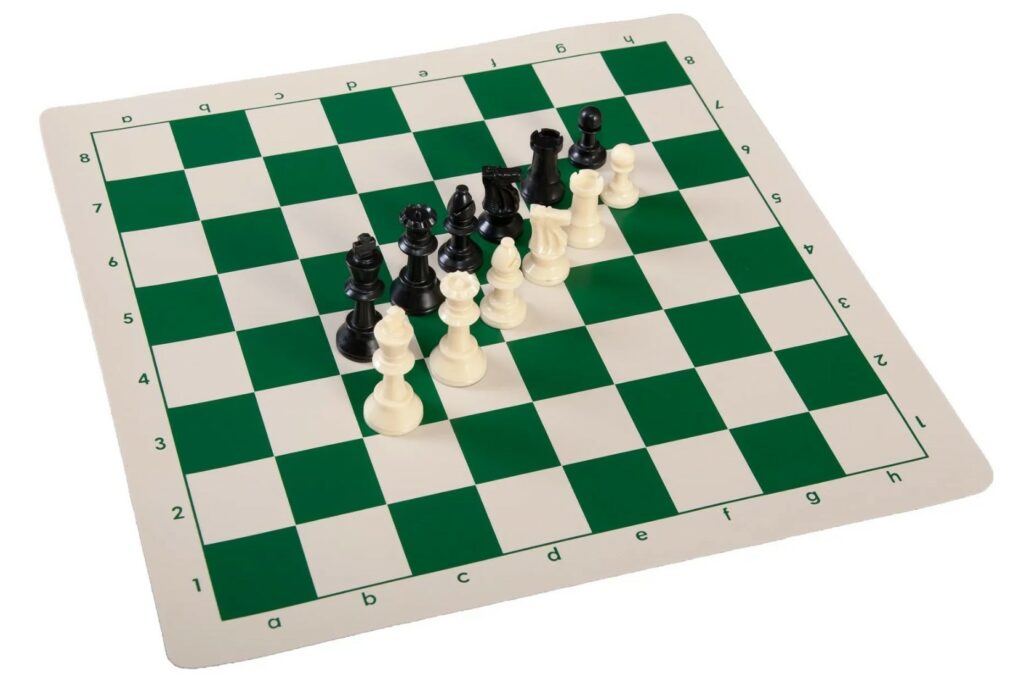
Ranks and Files
- The chessboard is an 8x8 grid. The horizontal rows are called ranks and are numbered 1 to 8, while the vertical columns are called files and are labeled ‘a’ to ‘h’.
- Each square on the board has a unique name, like e4 or b7, thanks to this grid system. These labels are your coordinates, making it easy to pinpoint and discuss the exact positions of your pieces.
Algebraic Notation
- Algebraic notation is the most common system used in modern chess to record moves.
- Each move is written with the piece’s initial (K for King, Q for Queen, R for Rook, B for Bishop, N for Knight) followed by the square it’s moving to. Thus, “Nf3” means a knight is hopping over to the f3 square.
- For pawns, it’s even simpler. You just write the destination square, like “e4”.
Special Moves
- Castling: When you castle kingside, it’s written as “O-O”. For queenside castling, it’s “O-O-O.” Think of it as your king moving to safety.
- Captures: If a piece takes another, it’s shown with an “x.” So, “Nxe4” means your knight captures whatever’s sitting on e4.
- Check and Checkmate: Putting the king in check is marked with a “+”, like “Qh5+.” If it’s checkmate, you use a “#.” Simple and clear.
You get a lot out of using notation markings on a chess practice board:
- Game Analysis: Keeping track of your practice games lets you go back and review them. Spot your mistakes, learn from master tactics, and see how you can improve.
- Learning and Improvement: Read chess books and annotated games with a clear understanding of tactics and strategies. Notation helps you communicate precise moves and follow along effortlessly.
- Competitive Play: In competitions, notation markings make everything transparent. They simplify post-game analysis, letting you and your opponents review every move with ease.
Additional Advice
- Keep a Log: Track your games to monitor your progress. It’s like having a personal record of your chess mastery.
- Use Guides and Annotated Materials: Learn from guides and annotated games to boost your knowledge. These resources break down complex strategies into easy-to-understand lessons.
- Review Frequently: Regularly review your games. This helps reinforce your understanding and sharpens your skills, making you better with each session.
Follow LED Indicators for Move Suggestions
You can make far better decisions by using LED indications on computerized chess boards like the DGT Pegasus Chess Board from House of Staunton’s collection. These chess engine-integrated signals either indicate possible moves or display the best possible move.
Benefits of LED Indicators
LED indicators provide real-time feedback, helping you understand the strength of your moves instantly. This is particularly valuable for beginners, allowing them to learn and correct mistakes on the spot. By following the suggested moves, you can learn why certain moves are stronger than others, which will help you grasp key strategic concepts.
How to Use LED Indicators Effectively?
As you play, pay close attention to the moves highlighted by the LED indicators. Try to understand the rationale behind each suggested move by considering factors like piece activity and board control. Here is how to use it:
- When the LED indicator suggests a move, compare it with the move you initially planned.
- Analyze why the suggested move is superior, which can highlight gaps in your understanding and help you improve.
- Set up specific positions on your practice board and use the LED indicators to explore the best moves in those scenarios.
- This targeted practice can improve your skills in openings, middlegame tactics, and endgames.
- Finally, combine the use of LED indicators with other learning methods, such as studying annotated games and using chess software.
Benefit from Real-Time Feedback and Analysis
These boards often come packed with features that offer instant feedback, pointing out mistakes and suggesting improvements. Here is how you benefit:
- Real-time feedback lets you identify and fix mistakes as they happen rather than discovering them after the game. This immediate correction reinforces proper techniques and strategies.
- Knowing why a move was a mistake can deepen your grasp of chess principles, like piece coordination, controlling key squares, and avoiding common pitfalls.
- The combination of visual and interactive elements in electronic practice boards makes learning more engaging and enjoyable, helping you stay motivated and improve faster.
How to Use Real-Time Feedback Effectively?
The feedback you get will help you up your chess game. This is what you need to do:
Focus on Feedback
During practice sessions, focus on the feedback after each move. This helps you understand why a move was suboptimal and what a better alternative could be. Try to link the feedback to your thought process at the time. Ask yourself: What was my goal? Why did this move miss the mark? What could I have done better? This self-questioning deepens your understanding and reinforces your learning.
Immediate Reflection
Take a moment to reflect on the feedback. This solidifies your understanding and helps prevent repeating the same mistakes. Pause to analyze the position and suggested improvements. Therefore, think about how the feedback affects your overall strategy, considering chess principles like control of the center, piece activity, and king safety.
Review Entire Games
Use the analysis features to review entire games, giving you a comprehensive breakdown of your performance. This helps you see how individual mistakes compound over time and impact the outcome. Look for patterns in your play, like frequent errors in the opening, middlegame, or endgame. This holistic view helps you pinpoint specific phases where you need the most improvement.
Final Thoughts
Investing in a chess practice board is an excellent way to improve your game. Whether you use a conventional physical board or a modern electronic one, the advantages include greater visualization skills, pattern identification, focused feedback, and analytical capabilities. The House of Staunton provides a variety of high-quality electronic practice boards meant to provide real-time feedback and interactive learning experiences.
Explore the collection at House of Staunton and find the perfect board to elevate your chess practice.
A chess practice board can come in several forms. Whether you just want understanding of your moves or real time feedback, learn about your options here.
Magnetic chess sets have become a game-changer for chess enthusiasts everywhere. No longer will a sudden u-turn while traveling send your carefully crafted strategy into disarray. These ingenious boards, equipped with magnets, keep your pieces firmly in place.
Let’s say you’re locked in an intense chess match with your rival, your mind racing with calculated moves. Victory is within reach, but an accidental bump to the table sends your queen tumbling off the board. As much as it's frustrating, it can also affect your focus and momentum. With magnetic chess sets, such woes are a thing of the past, or at least much less likely.
In this guide, we will explain different features, materials, and functionalities to help you find the perfect magnetic chess set that combines durability, convenience, and all the elegance chess deserves.
Table of Contents
Why Magnetic Chess Sets: Convenient and Travel-Friendly
A magnetic chess set has magnets on the bases of the chess pieces to keep the board position intact. These chess sets are incredibly versatile and offer benefits for all player levels that often go far beyond simply preventing checkmate meltdowns or pieces from getting knocked over while traveling.
Travel-friendly
Traveling for chess enthusiasts may seem like it means keeping your love for chess at home because it’s impossible to lug around a traditional chess set. Just imagine the number of (expensive) chess pieces you might lose during transit! But this problem is solved using magnets. Magnetic sets are incredibly portable and designed as such, making them ideal for travel. The pieces cling to the board so you can play on planes, trains, or even in the backseat of a car without fear of them getting scattered everywhere.
Convenience at Home
Storing a traditional chess set often involves carefully placing the pieces back in their designated slots in a chess box or the predetermined place in the board, which can be tedious. Magnetic sets eliminate this hassle. The pieces simply stick to the board, typically allowing for quick and easy storage. No more misplaced knights or missing bishops – everything stays neatly organized and ready for your next strategic showdown. In some cases, you can save a setup mid-game.
Focus on Strategy
With a magnetic chessboard, you can finally channel all your focus into strategizing and outwitting your opponent. No more worrying about accidental bumps or nudges dislodging your pieces. This allows for a smoother, more uninterrupted flow to the game, letting your strategic brilliance shine.
Great for Learning
Magnetic sets can be a valuable tool for beginners grappling with the fundamentals of chess. The frustration of constantly resetting fallen pieces can hinder the learning process. Magnetic sets provide a stable environment, allowing new players to concentrate on learning the moves and developing their chess skills without unnecessary interruptions. And if you plan on traveling soon, then a magnetic chess set can be the perfect companion. You can practice your tactics while catching a train to Zurich or even find new travel enthusiasts and challenge them to a match.
[product skus="VI0001,TRV0035,TRV0054"]
Choosing Your Perfect Magnetic Chess Set
Finding your next magnetic travel chess set is no easy feat, as you must consider many factors to discover your ideal fit. Here’s a quick guide to help you settle on the correct set:
Size
Travel-sized (1.75” and below squares)
Perfect for on-the-go chess enthusiasts. These compact sets are ideal for playing on airplanes, trains, or cafes. They are lightweight and portable, often folding for easy storage in backpacks or purses. However, the smaller squares might make you feel slightly constricted if you are playing with another opponent.
Standard (1.75” - 2.25” squares)
This is the most common size, offering a good balance between portability and playability. The squares provide enough space for comfortable piece handling without feeling bulky. Standard sets are versatile for home use and occasional travel.
Large (2.375” squares and above)
Are you looking for a grand playing experience with the features of a magnetic chess set? These luxurious sets cater to players who prioritize aesthetics above functionality. The larger squares offer a more spacious playing area and a classic feel. However, they come with increased weight and require dedicated storage space.
Tip: Think about where you will play most often. If portability is key, a travel-sized set is ideal. If you have dedicated storage space and prioritize a comfortable playing experience, a standard or large set might be a better fit.
Material
Most sets are made from primarily either wood or plastic.
Wood
If you are a chess enthusiast who prefers the timeless appeal of a traditional wooden chessboard but still wants your chess pieces to stay intact, then wood is the suitable material. Wood boards are typically more durable than plastic and can develop a beautiful patina. However, they can be heavier and more susceptible to warping or scratches. The best part about wooden chess sets is that you get many choices:
- Rosewood
- Mahogany
- Walnut
- Maple
- Zebrawood
- Sheesham Wood
- And many others
Plastic
Plastic chess sets are lightweight and durable, making them perfect for traveling. While they won’t provide the same satisfying feel as wooden ones, they are quite functional and easy to maintain.
Tip: If aesthetics and durability are top priorities, wood is a great choice. For portability and affordability, plastic is a good option.
Folding vs. Non-Folding Magnetic Chessboards
Magnetic chess sets offer the joy of strategic gameplay without worrying about pieces falling over. But when it comes to the board itself, an important decision arises: folding or non-folding?
| Feature | Folding Board | Non-Folding Board |
| Portability | Excellent - Folds flat for easy transport | Poor - Bulky and cumbersome to carry |
| Storage | Great - Folds for compact storage | Poor - Requires dedicated storage space |
| Playing Surface | May have a slight ridge or unevenness at the fold | Provides a flat, uninterrupted surface |
| Durability | Folding mechanism can wear out over time | Generally more robust and less prone to damage |
| Best For | Travel, casual play, limited storage space | Players who prioritize a smooth playing experience, dedicated chess enthusiasts |
Playing Experience
Magnet Strength
The magnets should be strong enough to hold the pieces securely, even if the board is bumped or tilted. However, overly strong magnets can make it difficult to move the pieces smoothly. Look for sets with magnets that offer a good balance between holding power and easy movement.
Piece Design
Opt for weighted pieces if you need the luxurious feel when playing on a magnetic chess set.
Price Range
This is the deciding factor for most chess enthusiasts, and thankfully, buying a magnetic chess set won’t cost you an arm and a leg. Magnetic chess sets can range in price from around $10 to $100 or more. The size, material, features, and brand of the set typically influence the price. Travel-sized plastic sets are generally the most affordable, while large, handcrafted wooden sets with premium features can be quite expensive.
Tip: Set your budget before shopping. With a clear budget in mind, you can focus on sets that offer the features and quality you desire within your price range.
Top Magnetic Chess Sets in the Market
Finally, you’ve settled on the size, material, price, and playing experience of your magnetic chess set, so now it’s time to give you some top contenders. These chess sets have been carefully curated, and each one brings its own quirk to the table.
US Chess Standard Checkbook Magnetic Travel Chess Set - 6” x 6” Board
Quirk: Fits in Your Pocket
This compact chess set is perfect for players who are always on the move. The board, measuring 5.75” x 6.25”, features a green and buff color scheme. Despite its small size, it is fully playable and incredibly portable. The strong magnets make sure that the pieces stay firmly in place, even when the board is folded. You can even fit it in your hand carry while traveling and whip up a game with your fellow travelers.
Additionally, the board includes algebraic notation along the edges, making it a useful learning tool for players at any skill level.
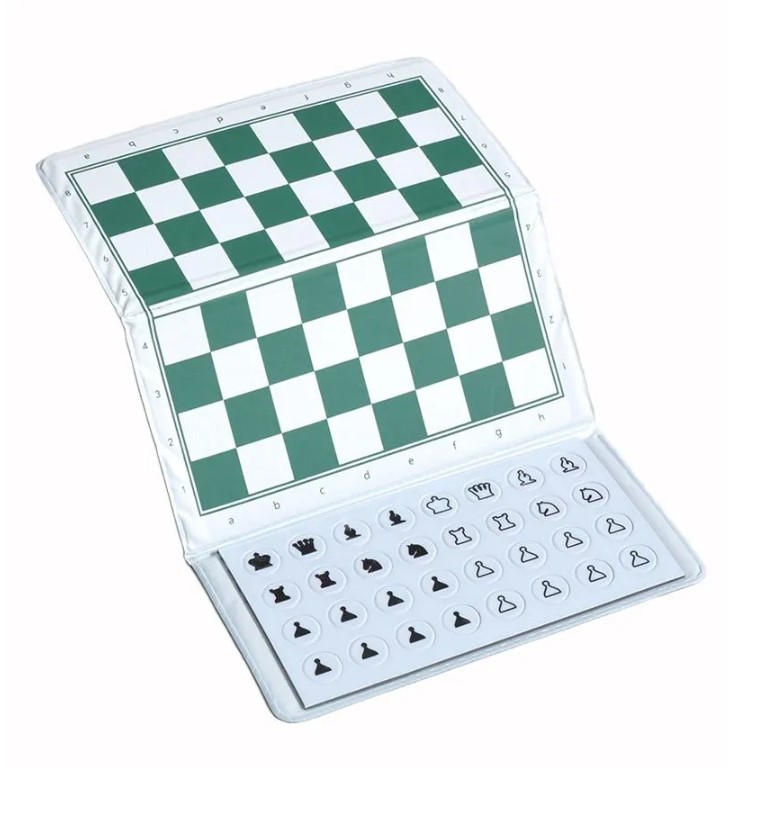
Wooden Folding Magnetic Travel Chess Set - 14” - Golden Rosewood and Maple
Quirk: Luxurious Design and Durability
This handcrafted set from The House of Staunton is made from Golden Rosewood and Maple, known for its strong magnetic properties. When opened, the board measures 14” x 14”, and when folded, it measures 14” x 7”. The king piece stands at 2.8” tall with 1.5” squares on the board. The set includes foam inserts to securely store the chess pieces when not in use, providing excellent protection.
Its beautiful design, paired with a strong construction, gives you the best of both functionality and style, so you can travel with something similar to a traditional chess set.
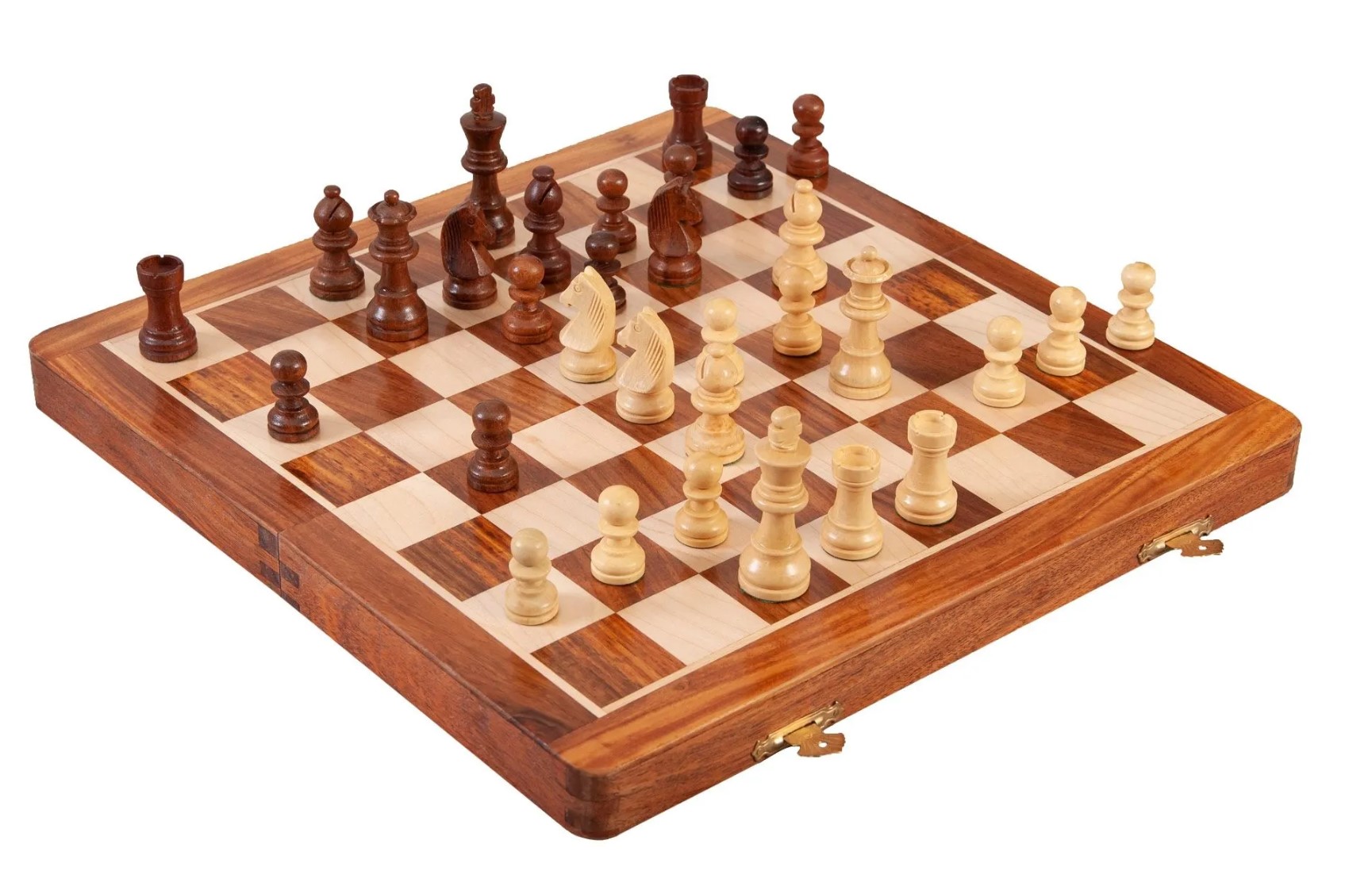
The Blue Magnetic Chess Set
Quirk: European Craftsmanship
Imported from Europe, the Blue Magnetic Chess Set is handcrafted and hand-finished from natural and stained hornbeam wood. It features the traditional Staunton pattern for easy recognition. Each piece has a large magnet in its base, providing stability for play on the go. The board is designed with a rich lacquered finish and looks like it came straight out of Van Gogh’s Starry Night painting.
It includes traditional rank and file labels around the perimeter and can be folded in half for easy storage. Inside the board, there are individual fitted compartments to protect each piece and prevent them from getting lost during transit.

Ultimate Wooden Magnetic Travel Chess Set - 12”
Quirk: Secure Position Saving
The Ultimate Wooden Magnetic Travel Chess Set, also from The House of Staunton, is crafted from Golden Rosewood and Maple. It is known for having the strongest magnets among travel sets. What sets it apart is its revolutionary two-part closure system, allowing you to save the game’s position for future play.
The strong wooden chessmen are designed in a new pattern that is reminiscent of older and classic chess sets, providing both nostalgia and practicality. The set measures 12” and folds down easily to fit your suitcase.
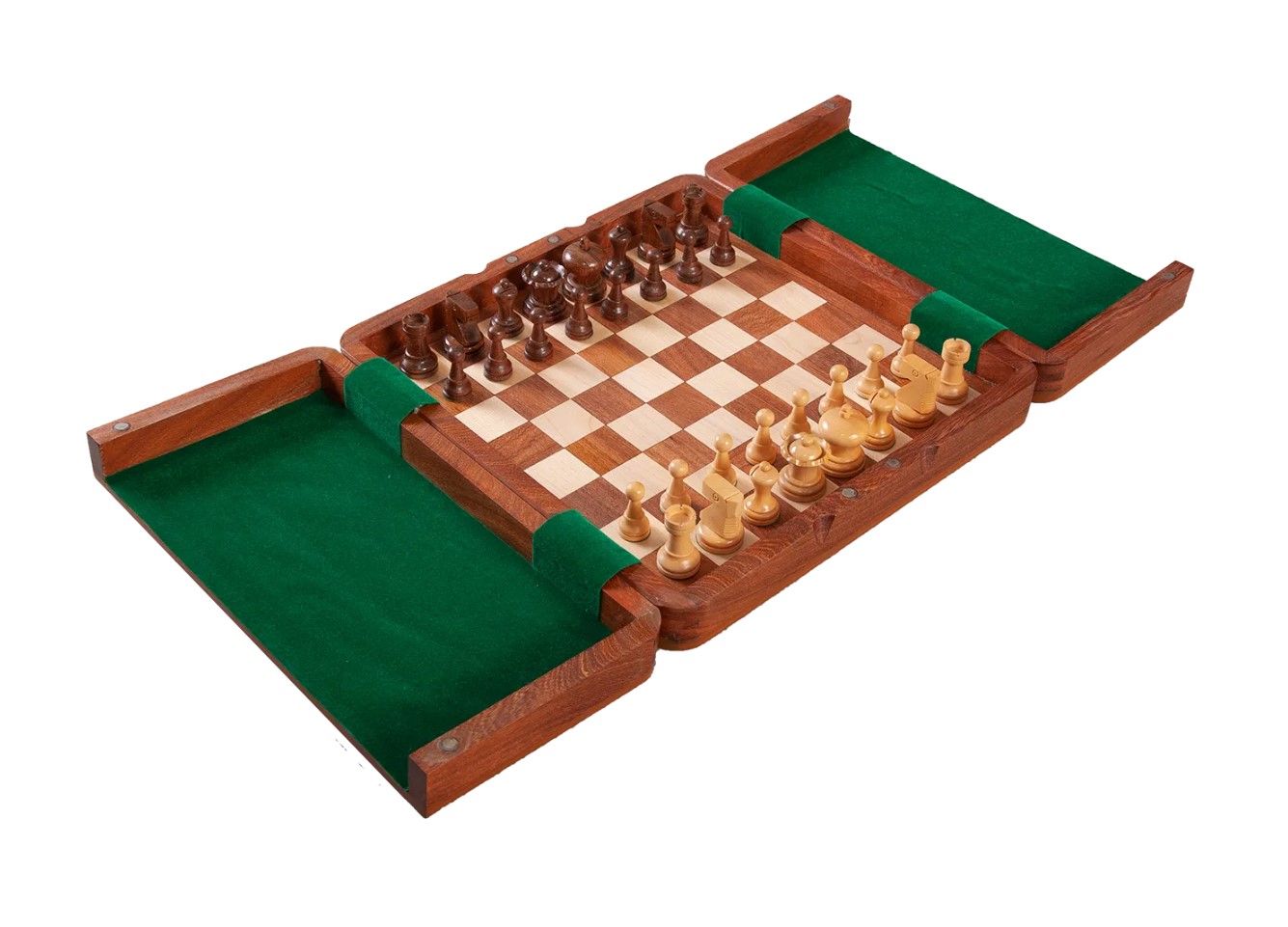
[product skus="TRV0044,VI0002,COMBOMAGNUS"]
Caring for Your Magnetic Chess Set
Your magnetic chess set will be with you throughout your travels, which means it will experience a fair share of wear and tear. But if you want your investment to last for years of strategic battles, follow these basic upkeep tips:
Storage is Key
Folding Boards
When you are not using your folding boards, keep them closed so the folding mechanism doesn’t warp or become loose. Store it flat in a drawer or shelf and don’t put heavy objects on top of the board.
Non-Folding Boards
Choose a dedicated space that is cool, dry, and away from direct sunlight or extreme temperatures. To protect the board from dust and scratches, use a chess bag or a box with a lid.
Cleaning the Board
Use a soft, dry cloth to remove dust and debris from the board surface regularly. This will help prevent dirt build-up, which can eventually affect the magnetic attraction between the pieces and the board.
Caring for the Pieces
While the magnets will hold the pieces securely, avoid rough handling or dropping them from a height. This can damage the magnets or chip the paint on the pieces.
Final Thoughts
Whether you are sitting in Chess & Checkers House in Central Park in New York City, challenging an opponent to a match, or practicing strategies while traveling on your own, a magnetic chess set proves to be the epitome of convenience. If you're planning to invest in your next magnetic chess set, then start by setting a budget, choosing the material you like, deciding between folding and non-folding designs, and eventually exploring professional retailers like the House of Staunton.
Remember, the ideal magnetic chess board is a reflection of your playing style and preferences. Play well!
A magnetic travel chess set is a must if you want to take your game on the road. Here is everything you would ever need to know to choose the perfect magnetic travel chess set for you.
At the tender age of eight, Ashwath Kaushuk defeated Jacek Stopa, a chess grandmaster. While there aren’t any official parameters that define a chess savant, defeating a GM at the age of 8 certainly counts towards it! Such events certainly point to the idea that chess savants are real.
So, what is a chess savant? Let's see some of the most notable stories from the elite chess world. Additionally, let's look at what might be required to become a chess savant (if that's possible).
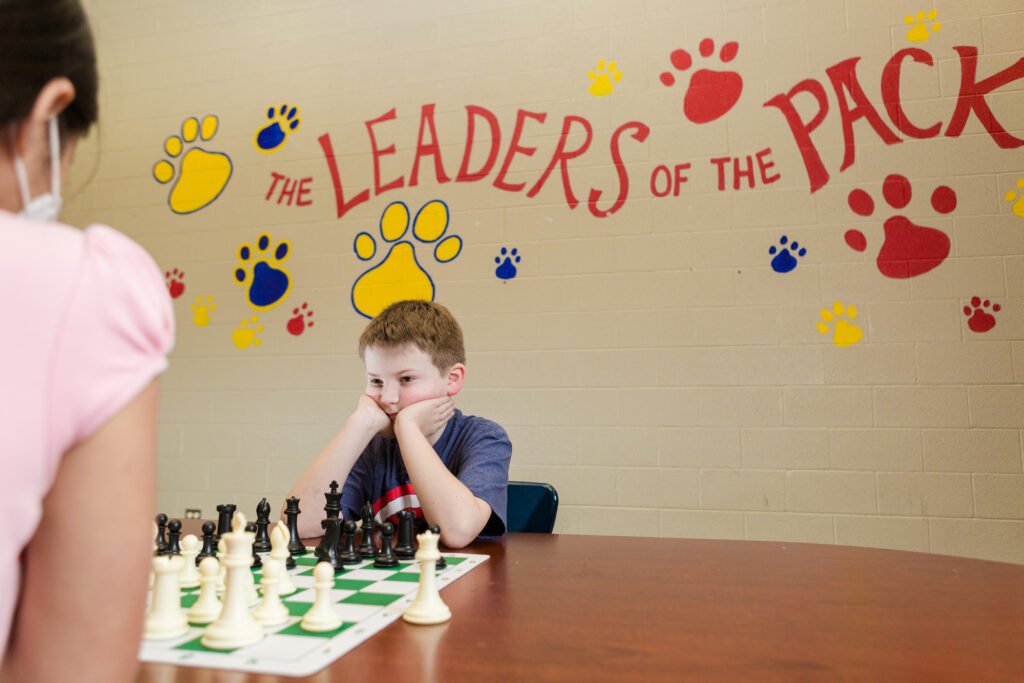
What Is a Savant: Chess Savant Meaning Explained
A savant is a person with exceptional knowledge, skills, and expertise in a specific area. The modern definition often depicts savants as individuals with a type of learning disability but phenomenal skills in that area.
A chess savant is a person with extraordinary mastery in the game of chess, often at a very young age. Their skill arises from certain key cognitional features:
- Outstanding Memory: They can recall complex board positions from previous games. They can also visualize several game variations in advance, many moves ahead.
- Pattern Recognition: They can recognize key positions and patterns that give them an edge in gameplay. They identify moves that are a turning point in the game.
- Strategic Thinking: Their brains are wired to plan the game several moves ahead. This is because they map out an extensive game plan and outmaneuver their opponents.
The phrase “chess savant” doesn’t always imply that the person is diagnosed with savant syndrome. It usually means that someone is very good at the game and shows an inborn talent for it.
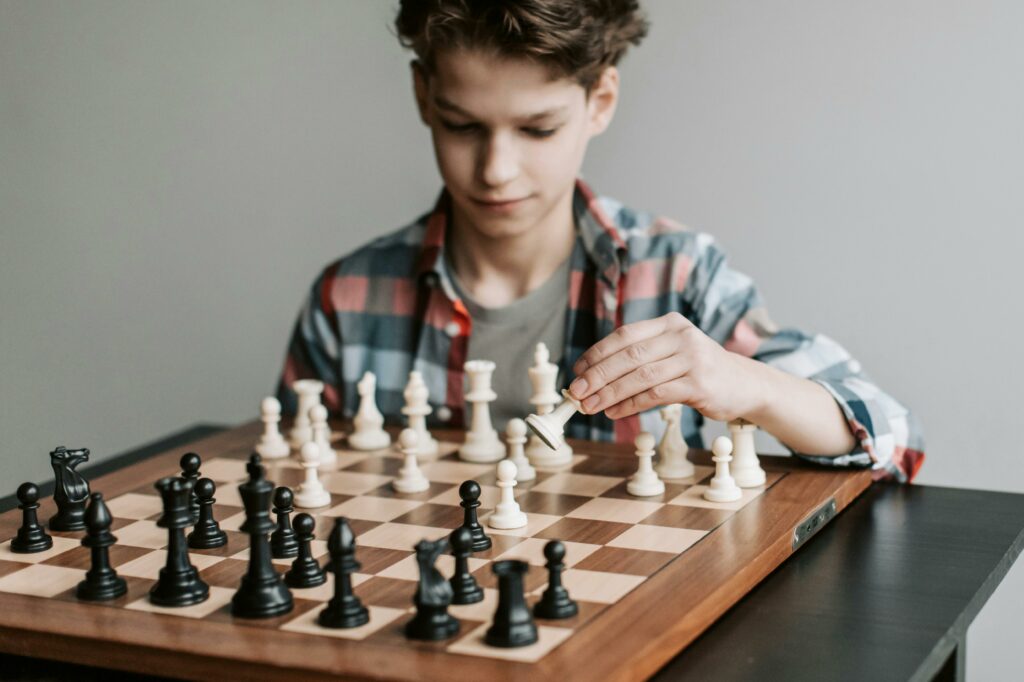
While people with savant syndrome might show great potential, their level of chess gameplay is not attributed to their natural gift. In fact, extensive training, practice, and studying are often a key contributor to their mastery of the game.
Chess Savants in Media
Media, especially Hollywood, plays a huge role in depicting savant chess players and setting up stereotypes and opinions. Lately, by portraying certain characters with savant-like abilities, they have been able to direct massive traffic to the game of chess! Whether their depictions are accurate is more up for debate.
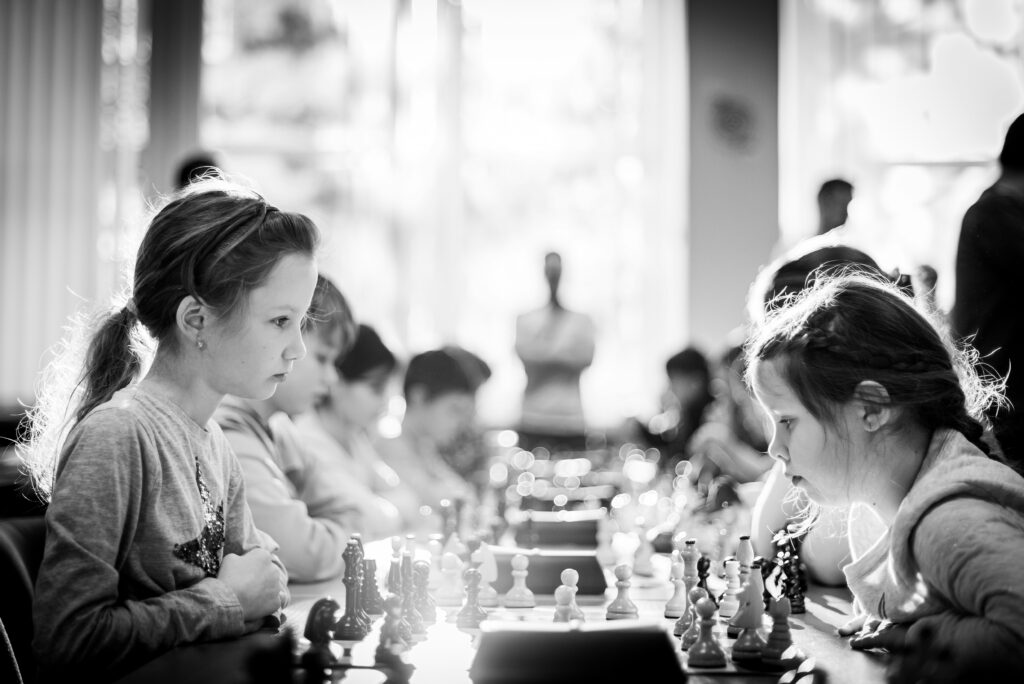
Let’s take a look at some of the most notable examples. We shall start with none other than savant chess player Beth Harmon from The Queen’s Gambit.
The Queen’s Gambit (2020)
This seven-episode mini-series revolves around a girl named Beth Harmon, who learns to play chess in an orphanage. Since the beginning of her career, Beth has demonstrated exceptional skills in the game. She beat the regional champion at 14 despite never having played in an official chess tournament.
The show vividly depicts her deep, analytical thinking style, which allows her to be so good at the game. Occasionally, she would look at the ceiling and picture it as a chess board with chess pieces, playing out various scenarios to calculate complex positions.
In the series, Beth’s life takes several rocky turns, but she is finally able to defeat the reigning world champion, Borgov, and take the esteemed title for herself. The series gained massive attention and contributed significantly to the growth of this sport.
The New York Times has reported that the release of this series has sent sales of chess boards and other related items by a whopping 125%! The House of Staunton even has a Queen's Gambit-inspired chess board.
Searching For Bobby Fischer (1993)
A young boy named Josh Waitzken discovers his natural talent in chess in New York. The movie explores the predicaments Josh faces throughout his life, often mirroring those of real-life chess prodigies. It also shows how certain factors can affect their performance. The friction between his family causes Josh to lose several tournaments.
Brief Overview of Savant Syndrome
Savant Syndrome is a rare developmental disorder, characterized by learning and intellectual disabilities, along with remarkable abilities in a specific domain such as mathematics, or music. It has a strong association with autism spectrum disorder, but other conditions might be linked as well.
Most savants, besides having a single exceptional skill, also boast a prodigious memory. The condition itself is rare, and is a spectrum, meaning the degree of ability and disability varies between every individual. The exact cause of the condition is not known.
The Role of Training & Environment for a Chess Savant
In theory, the concept of a chess genius looks thrilling and easy to grasp, but the reality is far more intricate and challenging. As a matter of fact, how well a savant or prodigy in chess develops their skill largely depends on their training and environment.
Related: Find the right tools to develop your child’s chess skills at an early age.
Training
Studies by K. Anders Erricson highlight the significance of deliberate practice, which emphasizes focused, structured practice with the goal of continuous improvement. This strategy has the potential to significantly improve the player's gameplay.
In fact, many great chess grandmasters have adopted this strategy, including Magnus Carlsen who dedicated countless hours to studying and analyzing chess. Some players even use and train a chess engine to make their games harder and hone their skill level.

Carlsen isn’t the only one. other prodigies like Garry Kasparov and Judit Polgar adopted a similar regimen of extremely arduous schedule, which led to their global success in the game.
There are many components of training. Here is a brief list of some of the most important ones:
- Study games of past grandmasters and champions
- Analyze positions
- Use chess engines to practice play
- Dedicate a fixed amount of time daily to practicing the game
- Set goals, and see if you’re meeting them
- Take part in official FIDE tournaments
Environment
A young chess prodigy's upbringing and education are critical, since young people are in a state of rapid development. Someone learning the intricacies of chess while their brain is also developing will typically be significantly better at the game compared to a player who starts their training late.
Access to competent chess mentors and resources can be the difference between a chess prodigy and a genius whose potential remains unrealized. Support from family, especially parents, is imperative in catapulting a child’s career in chess. Parents must take proactive steps to find chess communities that will nurture and develop their children's talent.
There is one more environmental factor that we need to mention: socio-economic status. Not having the capital to afford adequate chess training and resources can hamper the growth of a chess prodigy, and although the game has been made highly accessible with the advent of the internet, there are still many hurdles they must cross, like hefty platform fees, tournament fees, and more.
Is Chess Savant a Myth? No!
The world of chess keeps getting younger and younger, with the grandmaster title being given at the ages of 12 and 13. While the criteria for a chess savant aren’t all that clear, the existence of such remarkable feats is only fueling the presence of such notions.
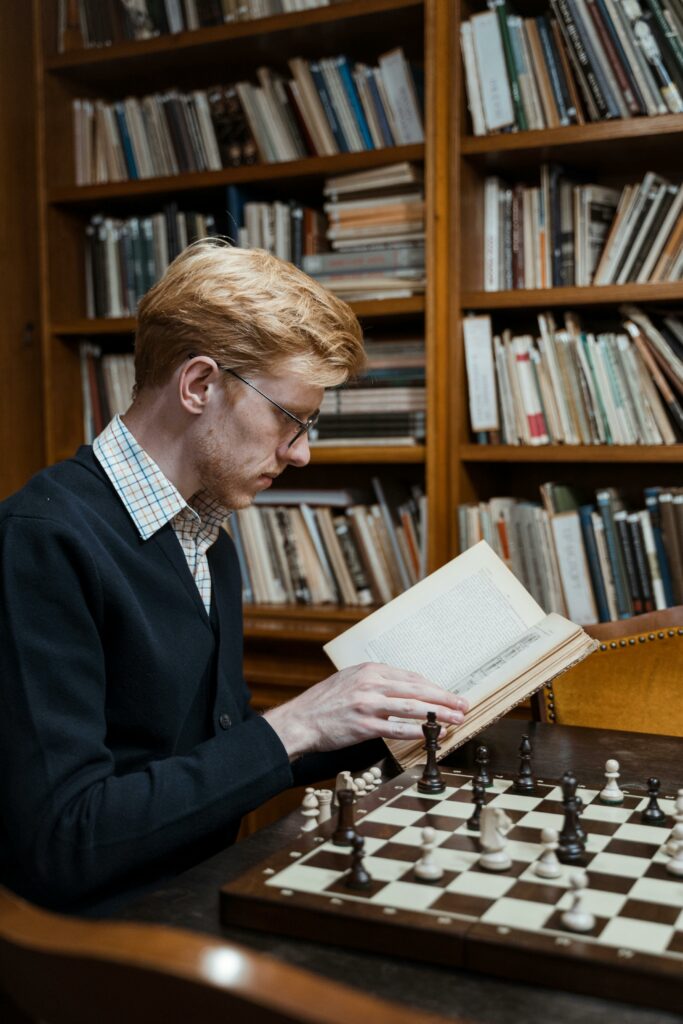
While at first glance the "chess savant" and their path to success seem simple and captivating, the reality is very different. The highly competitive nature of the sport means that inborn talent alone will not be enough to outshine the competition. There is much more to it, and we can hope and strive for a community and greater chess environment that will allow these talents to reach their potential.
Frequently Asked Questions
While it is possible to do so, savant syndrome usually starts early in life. It is possible that the skill of a chess savant might go unnoticed for a long period of time, after which people might pay attention to their extraordinary skill. However, developing savant syndrome late in life is quite rare.
Yes. chess savants are real. There have been many players who have shown exceptional talent at the game early on in life.
Grandmaster is a title given to a player with exceptionally high skill in the game who meets certain qualifications. While savants are innately good at the game, they don’t equate to being a grand master. Getting to the grandmaster level requires intense training. However, getting the grandmaster title may be easier for savants than the average player.
A chess genius is someone who has great proficiency over the game of chess, often at a young age. There have been few confirmed cases of a chess prodigy being diagnosed with savant syndrome. While the concept of a chess genius is exciting and simple to understand, in reality, it is significantly more complex and difficult. The extent to which a chess savant improves their skills is heavily influenced by their training and environment.